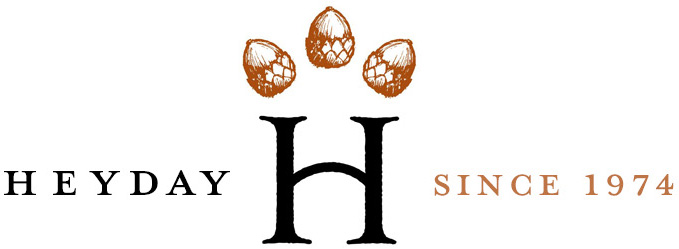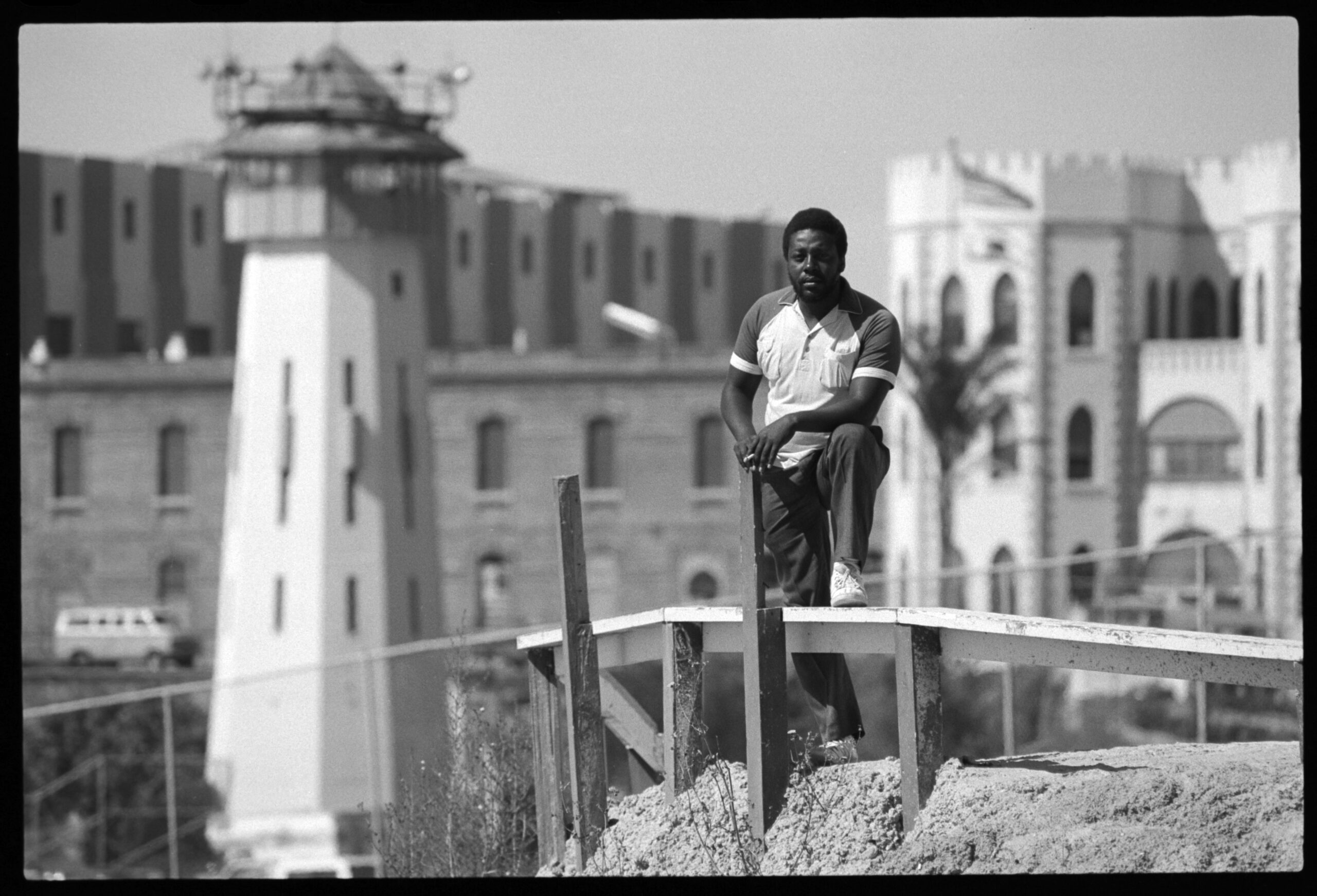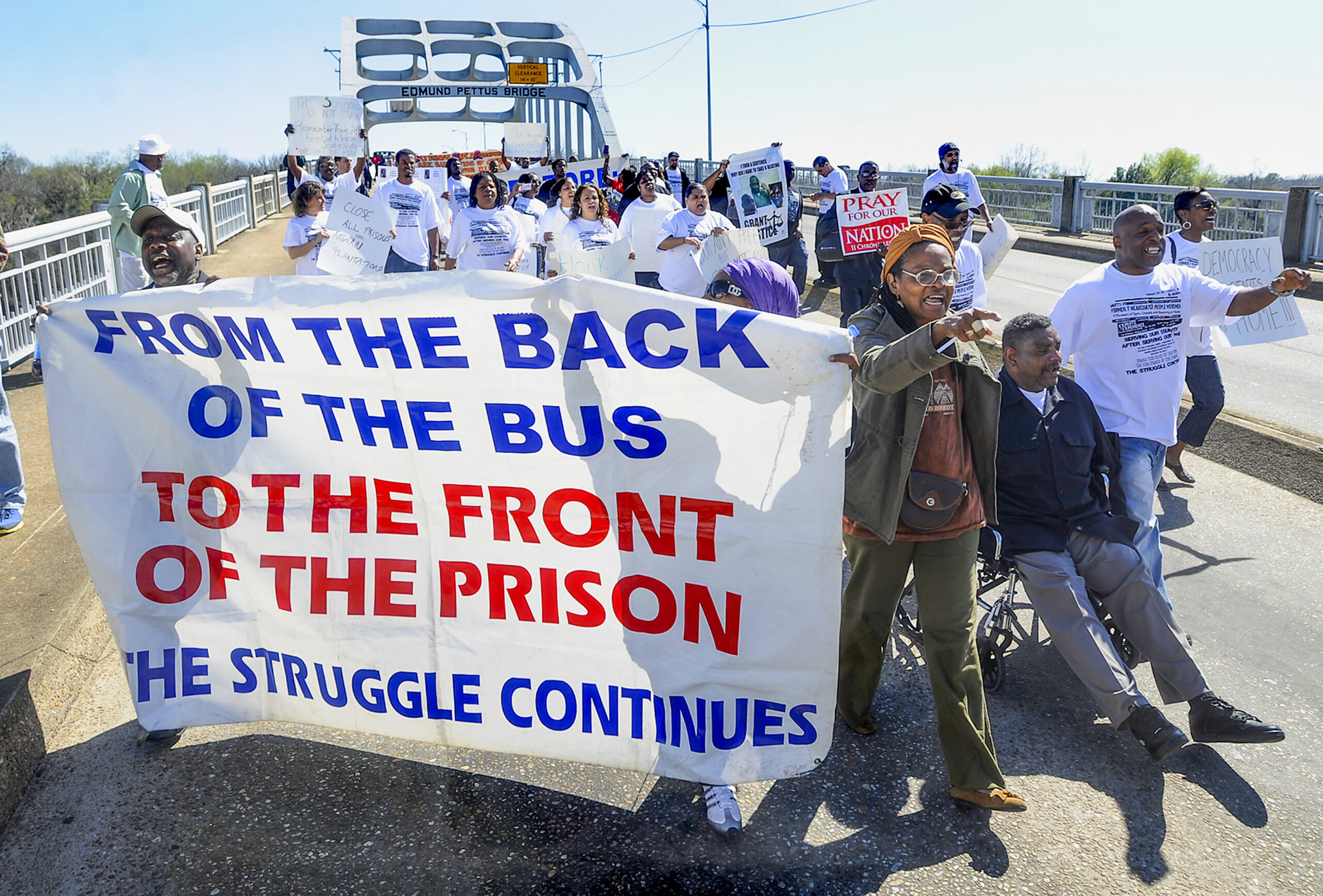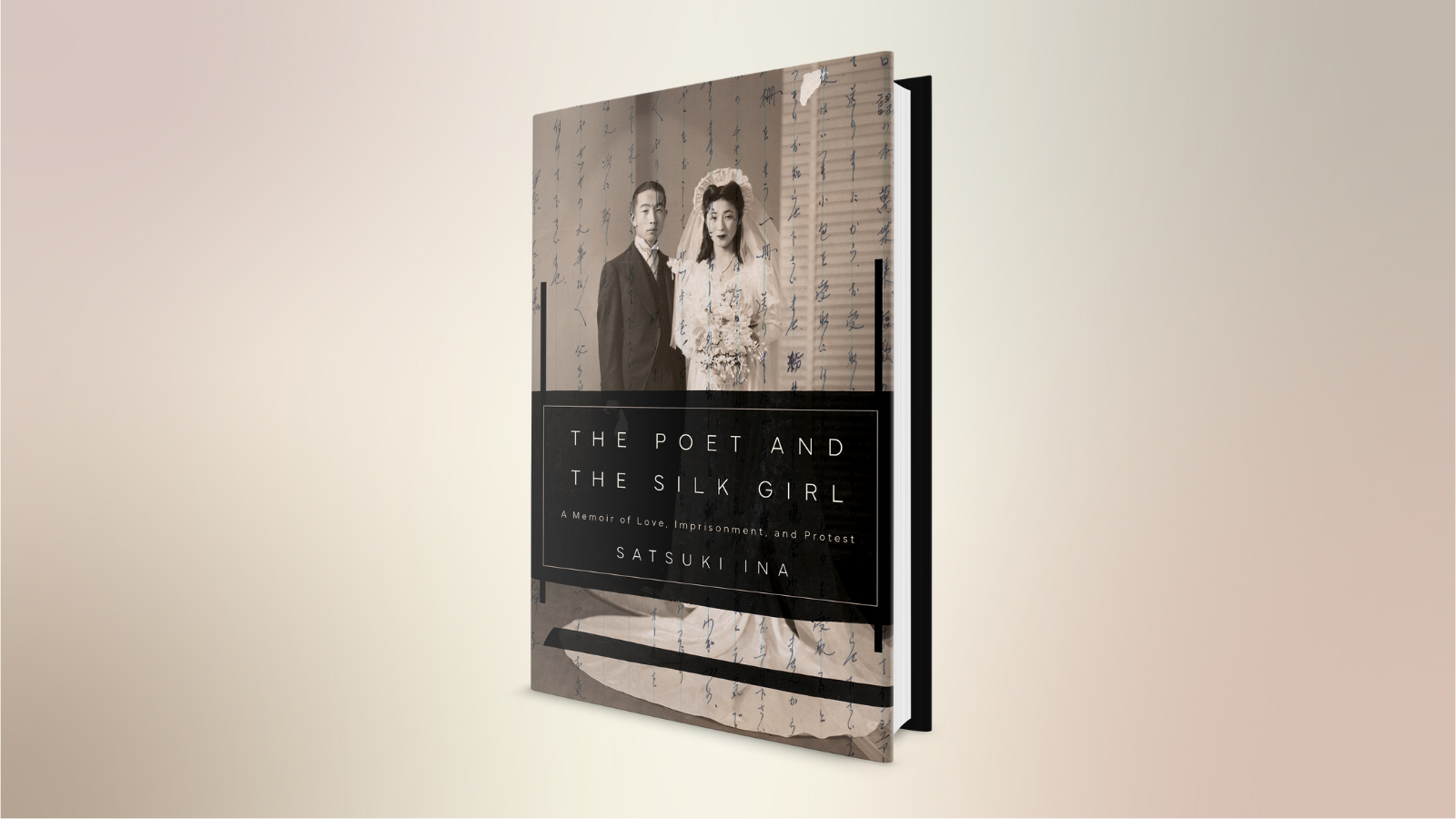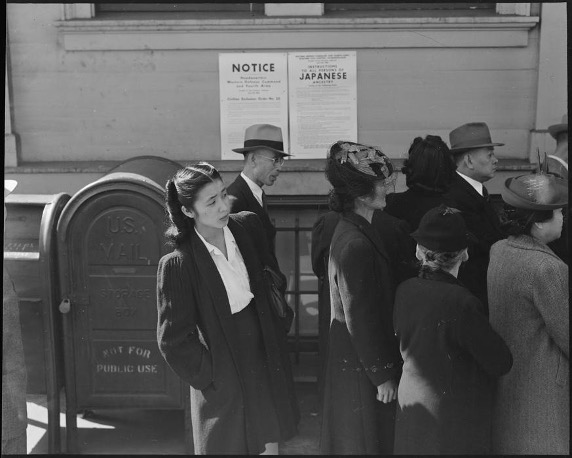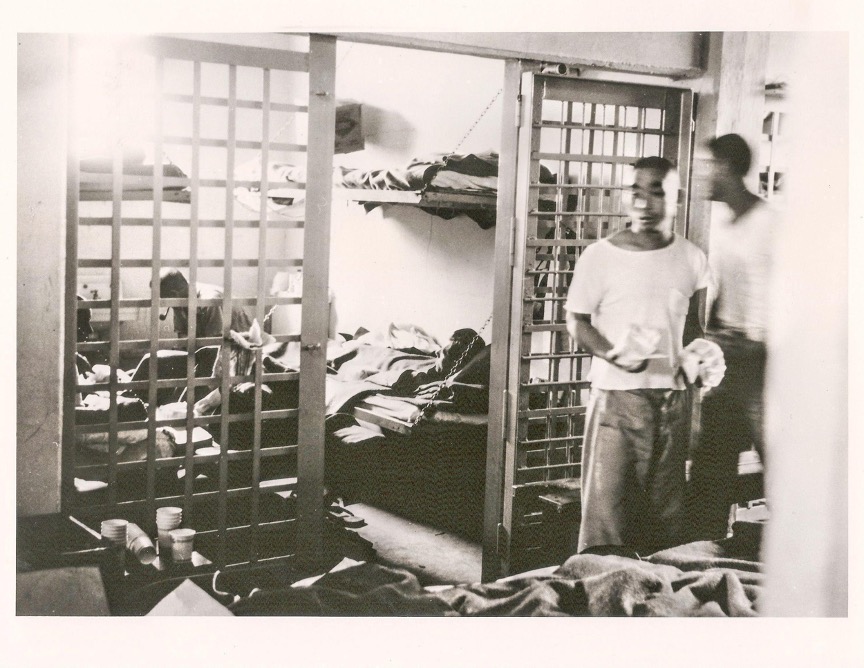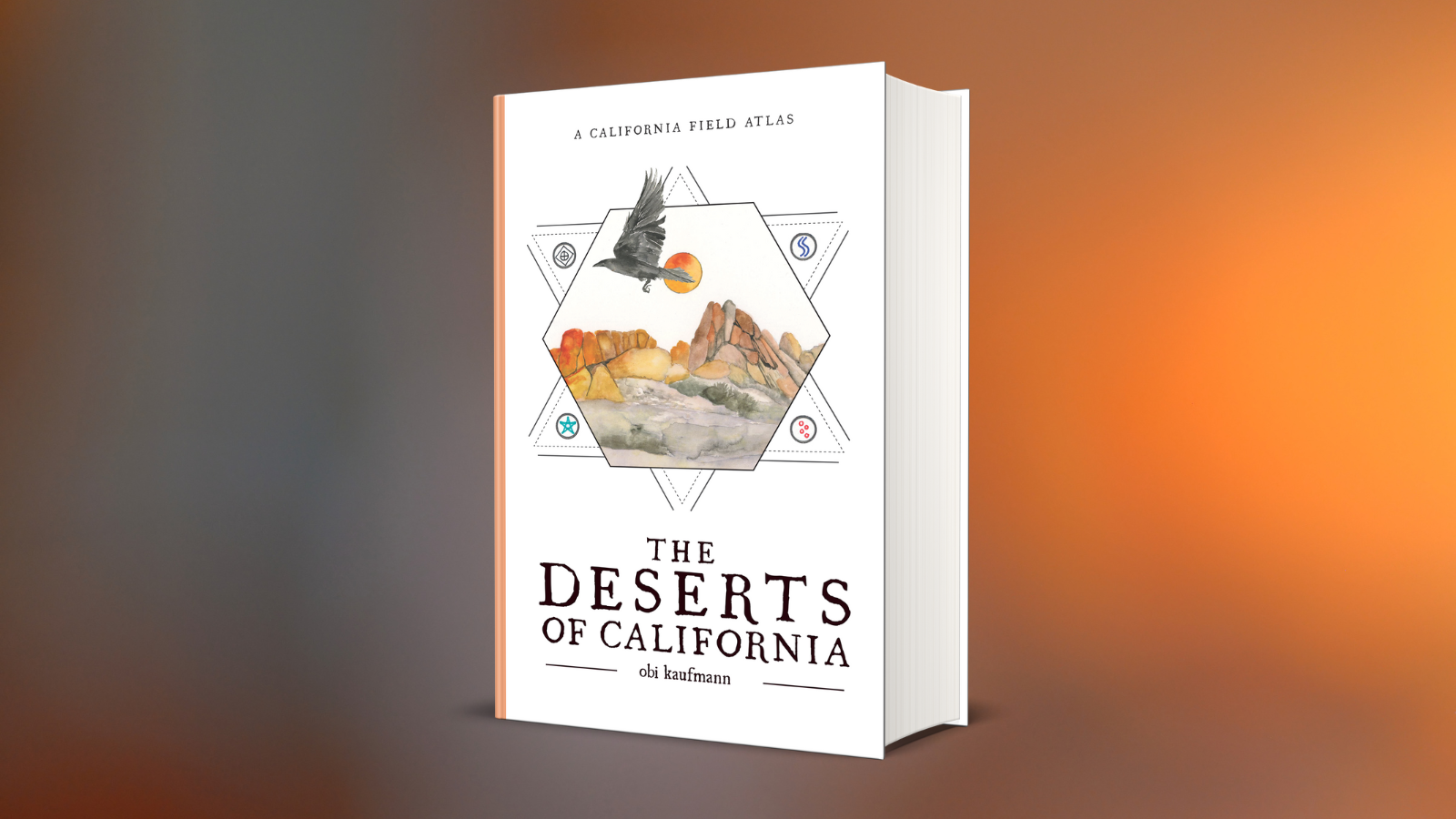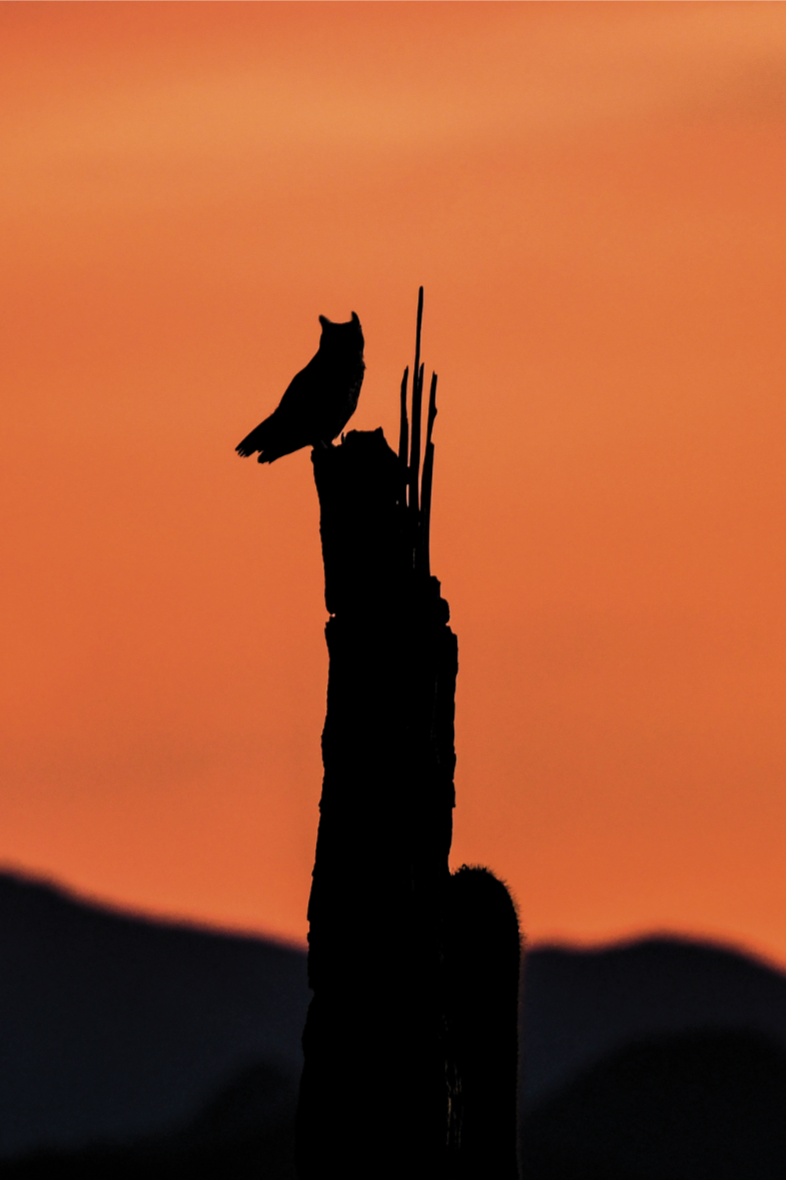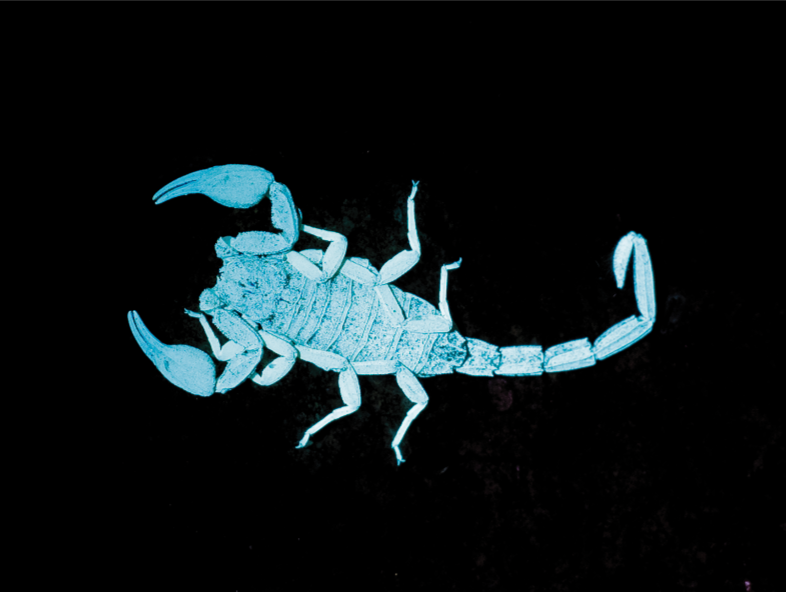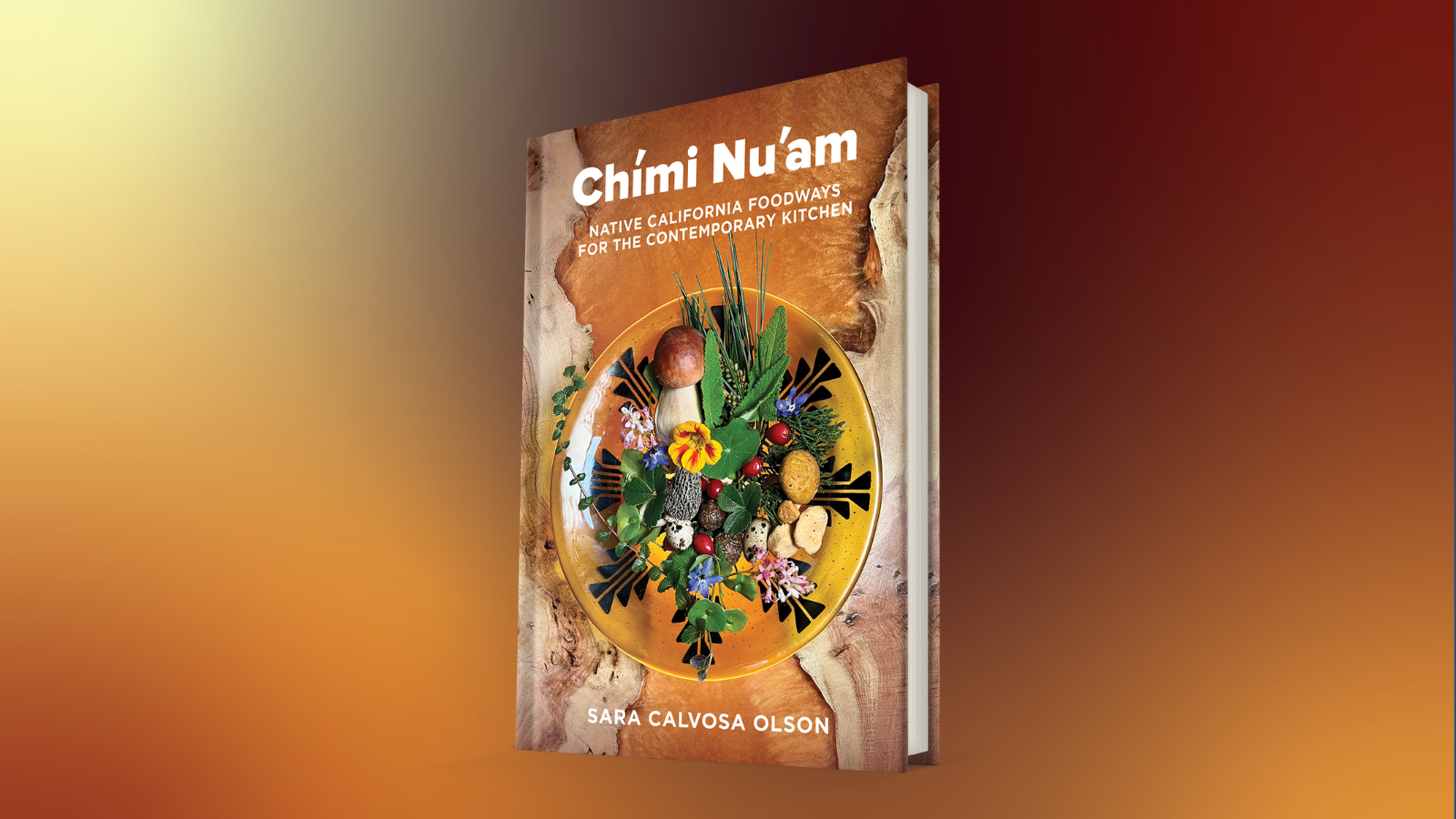Debuts April 2024 — What Kind of Bird Can't Fly
A Leader in the Movement for Prisoners’ Rights Shares Telling Insights in New Memoir Centering Solidarity and Resistance
Dorsey Nunn shares his meteoric origin story, tracing how his time spent in prison became a catalyst for the nationwide movement he nurtured to restore dignity and justice to the currently and formerly incarcerated.
“Whoever wants to assuage their doubts that radical change is possible—from the level of the individual to that of law, culture, and society—should make time to read Dorsey Nunn’s extraordinary memoir. Follow him and those with whom he makes community as they do the formidable work of transforming themselves, while fashioning a new world out of their tears and laughter where all—including those banished to prisons—are equally welcome.”
—ANGELA DAVIS, political activist and author of Are Prisons Obsolete?, Abolition Democracy, and Freedom is a Constant Struggle
BERKELEY, CALIF. — After serving over a decade in the California state prison system, Dorsey Nunn emerged fueled by the fight for reform and redress. Empowered by mentors both inside and outside the prison walls, Nunn poured his considerable energies and insights into organizing system-impacted people for sweeping change. As a cofounder of All of Us or None, a nationwide civil and human rights organization, Nunn has successfully fought to raise awareness around involuntary servitude behind bars, strengthen families during and after incarceration, and reduce employment and voting barriers for reentering people. What Kind of Bird Can’t Fly: A Memoir of Resilience and Resurrection is his remarkable story.
“Like just about everyone I grew up with, I graduated from street thug to prisoner just in time to experience one of the most violent decades in California prison history,” says Nunn, “But this isn’t a prison memoir. And it’s not a personal redemption story, though I’ve done alright on that front. This book is about camaraderie, commitment, and grassroots organizing.”
Written with former LA Times reporter Lee Romney, What Kind of Bird Can’t Fly follows Nunn’s story from his upbringing in East Menlo Park through lockdown in San Quentin to the purpose he found in the decades following his release. Detailing along the way the structures of oppression and sources of inspiration from which Nunn would derive his revolutionary political outlook, this memoir underscores the urgency of restoring and fortifying the civil rights of the currently and formerly imprisoned, from humane living conditions and fair pay inside to access to the presumption of rehabilitation upon completion of a sentence. Influenced by philosophies of the Black power tradition and informed by his own firsthand experiences, Nunn chronicles the traumas and triumphs of his life’s work uplifting the voices of those who have been dispossessed by the criminal legal system, including the campaign to shift public consciousness during the high watermark of the U.S.’ “tough-on-crime” policy era. Anchored throughout is Nunn’s commitment to combat systemic racism and to empower every human being coming out of cages to become the architects of their own liberation.
“The vital grassroots, movement-building work to which Dorsey has dedicated his life has touched and changed countless lives,” writes Michelle Alexander in her foreword to the book, “and demonstrated the brilliance, creativity, and resilience of the very people that our nation has treated as disposable.”
“Dorsey Nunn is one of the grand love warriors and freedom fighters of his generation!
Don’t miss his powerful and poignant story of tragedy and triumph!”
—CORNEL WEST, philosopher and author of Race Matters and Hope on a Tightrope: Words & Wisdom
Advance Praise for What Kind of Bird Can't Fly
“Dorsey Nunn’s memoir is well-written, compelling, moving and honest. It is a story about Dorsey, but because Dorsey knows more deeply than most that nothing good we do is done alone, it is also an ode to so many others who have walked this path with him all these years. While it is a book about the devastation wrought by one of the most death-making institutions in our nation, it has far more heroes in it than villains, and far more hope than despair.”
—DANIELLE SERED, founder and director of Common Justice, author of Until We Reckon: Violence, Mass Incarceration, and a Road to Repair
“Raw, riveting, and revealing sums up What Kind of Bird Can’t Fly. It is a front row seat to the author’s transformational journey through pain, anger, and hopelessness to emerge with an iron clad resolve to love and advocate for those who society considers the least. While his approach may seem raw, brutal, or even vulgar, Dorsey cajoles the reader, as he does those who come in contact with him, to understand the birthing environment that leads a person towards incarceration, and to take a deeper look at our carceral system while recognizing the humanity of those trapped in its vicious grips.”
—DESMOND MEADE, Executive Director of the Florida Rights Restoration Coalition
Media Contact:
Kalie Caetano
Marketing & Publicity Director, Heyday
For review copies, feature interest, and interview and image requests, get in touch: publicity@heydaybooks.com.
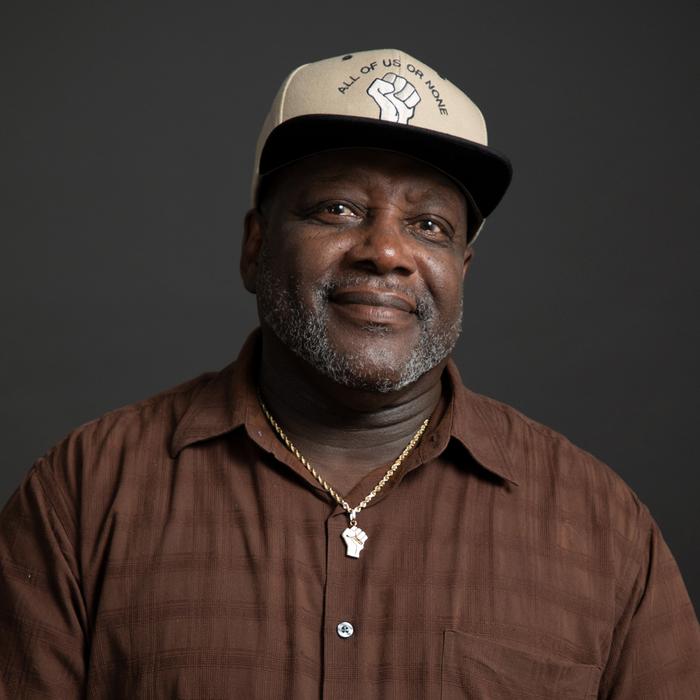
Dorsey Nunn began advocating for the rights of California prisoners and their families while incarcerated. As codirector of Legal Services for Prisoners with Children (LSPC), in 2003 he cofounded All of Us or None (AOUON), a grassroots movement of formerly incarcerated people working on their own behalf to secure their civil and human rights. AOUON is now the policy and advocacy arm of LSPC, which Nunn has led as executive director since 2011. Collective victories include ending indefinite solitary confinement in California, expanding access to housing and employment for formerly incarcerated people, and restoring the vote to those on parole and probation.
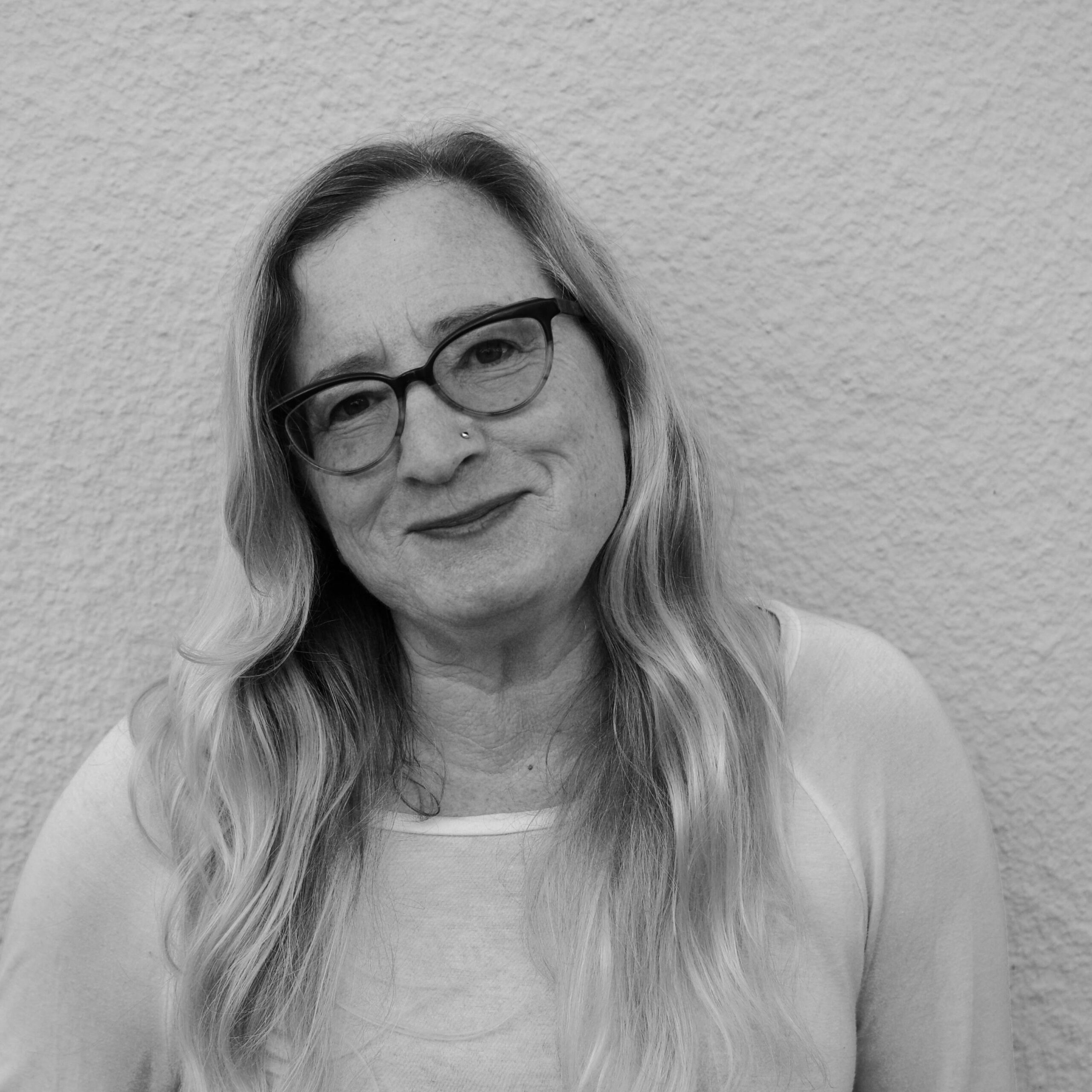
Lee Romney spent twenty-three years as a reporter at the Los Angeles Times, where she developed expertise in criminal justice and mental health. She is currently collaborating with a former public defender on the podcast November in My Soul.
Debuts March 2024 — The Poet and the Silk Girl
New Memoir Unveils One Japanese American Family’s Life Inside a WWII-era American Concentration Camp
The Poet and the Silk Girl follows the harrowing journey of the Ina family through wartime race-based incarceration and traces the echoes of trauma across the generations.
BERKELEY, CALIF. — In 1942 San Francisco, photojournalist Dorothea Lange captured an era-defining portrait: A Japanese American woman cranes her neck, concern etched across her brow, as she waits in line to register her family for forced removal. She was one of the 125,000 people of Japanese ancestry that the U.S. forcibly displaced and incarcerated after declaring war on Japan in WWII. The woman at the center of this evocative image was Shizuko Ina, and The Poet and the Silk Girl: A Memoir of Love, Imprisonment, and Protest is the story of the unimaginable future that came next for her and her family.
In this moving memoir, author Satsuki Ina—who was born to Shizuko in the Tule Lake Segregation Center—recovers the story of how her parents survived and resisted their incarceration in U.S. concentration camps. Drawing from diary entries, heart-wrenching haiku, censored letters, government documents, and clandestine messages, Ina shares the eyewitness dispatches of Shizuko and her newlywed husband Itaru. Their words, interwoven with the ravel of war and Ina’s own retrospective reflection, afford an intimate view into the experiences of those whose lives were upended, by reason of race alone, by Executive Order 9066—a presidential edict that dispossessed an entire generation of Japanese people, including U.S. citizens, of their homes and livelihoods.
The Inas’ story takes us from San Francisco’s Japantown—rendered desolate by forced removal—to the cramped quarters of Tanforan. It captures a rare glimpse of camp life at Topaz, a hotbed of organized protest, where the Inas’ second child was born, and where Itaru took a principled stance as a “No-No” when pressed under duress to pledge his loyalty to the U.S. government. It takes us to an “enemy alien” prison camp in Bismarck where the fate of the family hangs in precarious balance as the war draws to a close. And it takes us to now, as Satsuki Ina, a psychotherapist and activist, connects her family’s ordeal to paralleling atrocities today—from anti-Asian hate crimes to the incarcerated migrants at the U.S.-Mexico border.
With dauntless conviction, Ina’s multivocal memoir serves as a powerful testament to the traumatic legacies of state-sanctioned race-baiting and fear-mongering. It also reminds us of the temerity of the human spirit and the fortifying succor of compassionate witnessing.
Advance Praise for The Poet and the Silk Girl
“This is a seminal, beautifully rendered intergenerational narrative of a courageous young couple who spoke truth to power that re-centers the Japanese American incarceration story as civil rights activism.”
—BARBARA TAKEI, coauthor of Tule Lake Revisited
“Satsuki Ina’s The Poet and the Silk Girl is a revelation. Beautifully woven together by her mother’s diary and her father’s haiku—through which they are both still speaking—it is memoir as healing, as self- and soul-determination, and as vigilance, the keeping vigil over past lives that are still becoming.”
—BRANDON SHIMODA, author of The Grave on the Wall
“Tracing the lives of her newlywed US-born Japanese American parents through no fewer than six different camps and the births of two children, Ina weaves archival and family ephemera together, heightened by her insights as a psychotherapist. The Poet and the Silk Girl is storytelling as activism at its finest.”
—DEBORAH A. MIRANDA, author of Bad Indians: A Tribal Memoir
“The internal landscape of injustice is made heartbreakingly visible in this exquisitely written and passionate memoir. It reminds us of what we might otherwise forget: that injustice is an intimately lived experience, endured day to day and hour to hour, and full of complexities roiling deep in the heart and mind.”
—DAVID GUTERSON, author of Snow Falling on Cedars
“Satsuki Ina’s family-rooted memoir is a richly documented and reasoned investigation of how the US government’s unjust World War II oppression of some 125,000 Americans of Japanese ancestry set in motion an intergenerational transmission of trauma that now urgently needs to be addressed and redressed.”
—ART HANSEN, author of Barbed Voices and A Nikkei Harvest
“The Poet and the Silk Girl is a ground-breaking contribution to the literature on the World War II incarceration of Japanese Americans. This combination of first-hand accounts from the past with Ina’s personal experiences and expertise brings incarceration history to life in unique, powerful, and insightful ways.”
—DONNA NAGATA, author of Legacy of Injustice
“Born in an American concentration camp, Satsuki Ina weaves her own experiences into conversation with her parents’ wartime letters and father’s haiku poetry from behind barbed wire to show how family history is a part of the very fabric of the struggle to belong in America. A beautifully-crafted memoir and community history that brilliantly reveals how past, present, and future are interlinked.”
—DUNCAN RYUKEN WILLIAMS, author of The Other Side of Zen
“A profound and moving testimony to intergenerational trauma and resistance.”
—TONY PLATT, author of Beyond These Walls
“A tremendous, and tremendously moving, account of injustice, resistance, and resilience. The indignities endured by Satsuki Ina’s parents were beyond healing, but in telling their story unflinchingly and drawing its lessons for our time, she herself reaches impressive closure.”
—FREDERICK CREWS, author of Freud: The Making of an Illusion
“This incredibly poignant account reveals how a daughter uncovered why her parents went from buying war bonds and voting in every election to renouncing their citizenship during the World War II mass incarceration. In writing this family memoir, Satsuki Ina pays tribute to her parents’ courageous protest and love of family while also showing how their suffering inspired her support of recent Central American migrants experiencing indefinite detention and family separation.”
—ALICE YANG, Co-Director of the Center for the Study of Pacific War Memories
“A powerful quilt work of memory, The Poet and the Silk Girl sutures the traumatic wounds of Japanese American incarceration with care for the past and struggle for the future.”
—ANDREW LEONG, Assistant Professor of English, UC Berkeley
Media Contact:
Kalie Caetano
Marketing & Publicity Director, Heyday
For review copies, feature interest, and interview and image requests, get in touch: publicity@heydaybooks.com.
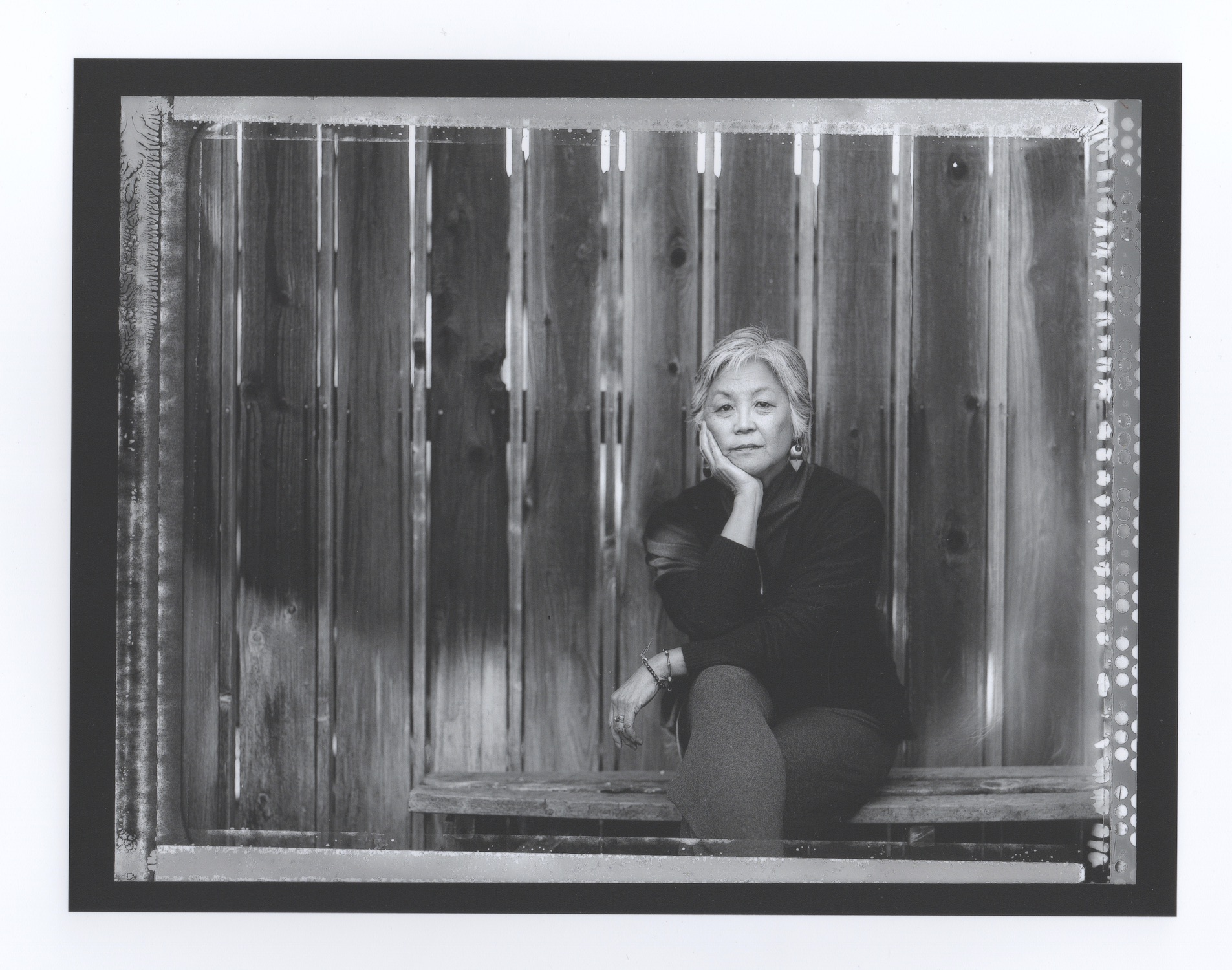
Satsuki Ina is a psychotherapist specializing in community trauma. She helps victims of oppression to claim not only their voice but also their power to transform the systems that have oppressed them. Her activism has included co-founding Tsuru for Solidarity, a nonviolent, direct-action project of Japanese American social justice advocates working to end detention sites. Ina has produced two documentaries about the World War II incarceration of Japanese Americans, Children of the Camps and From a Silk Cocoon. She has been featured in the New York Times, the Los Angeles Times, TIME, Democracy Now! and the documentary And Then They Came for Us. A professor emeritus at California State University, Sacramento, she lives in the San Francisco Bay Area.
Debuts April 2024 — The Forgetters
An Enchanting Story Cycle Traces Tales of California Indians from the Missions to Modern-Day, Recalling Timeless Truths
Award-winning author and long-time tribal chairman Greg Sarris debuts an incantatory new fiction collection rooted in the ancestral homelands of the Coast Miwok and Southern Pomo.
“Greg Sarris once again tells us a story filled with stories that lift the spirits in troubled times. A wonderful read that transports us to a realm of beauty, kindness, and love of life.”
—ROXANNE DUNBAR-ORTIZ, author of An Indigenous Peoples’ History of the United States
BERKELEY, CALIF. — Celebrated storyteller and tribal leader Greg Sarris offers a contemplative and enchanting story cycle in The Forgetters (April 2024), a collection that blends into an unsuspected harmony shimmering dream trance with waking life, human and animal forms, and eras bygone and still-to-come. Borrowing from the cadence of Native American creation stories and the quiet enchantment of magical realism, these tales combine to reveal the foibles and folly that beset us and the lessons that recall us to ourselves and the world.
The Forgetters excavates multilayered tales of California’s Indigenous exiles, camp workers, shapeshifters, and medicine people as they interweave with the paths of settlers, migrants, and other wayfarers across the arc of recent centuries and beyond. Narrated by the enigmatic crow sisters, Question Woman and Answer Woman (who first appeared in Sarris’ 2017 How a Mountain Was Made—lauded as “a stunning array of […] contemporary allegories” by the Los Angeles Review of Books), this collection returns to Sonoma Mountain and traverses the homelands of the Coast Miwok and Southern Pomo. Rooted in today’s Marin and Sonoma counties, these transporting tales glimmer with an intimate connection to place and past—from ancient mythic time when all the animals were people to a speculative future when the people return as environmental refugees to the mountain from which they came.
“Greg Sarris once again tells us a story filled with stories that lift the spirits in troubled times,” says Roxanne Dunbar-Ortiz, author of An Indigenous Peoples’ History of the United States. “[The Forgetters is] a wonderful read that transports us to a realm of beauty, kindness, and love of life.”
This collection of tales, interwoven with the memorable banter of the crow sisters, chimes a moral chord that reminds us why we need each other, that all our stories are connected, and that the words we remember become the words we live by—and to forget them is to risk peril. Heralded as a “fine storyteller” by former U.S. Poet Laureate Joy Harjo, Sarris’ latest is a triumph of craft that showcases the enduring power of story to make and remake our world anew.
Media Contact:
Kalie Caetano
Marketing & Publicity Director, Heyday
Isabella Nugent
Publicist, Page One Media
For review copies, feature interest, and interview and image requests, get in touch: publicity@heydaybooks.com and/or isabella@page1m.com
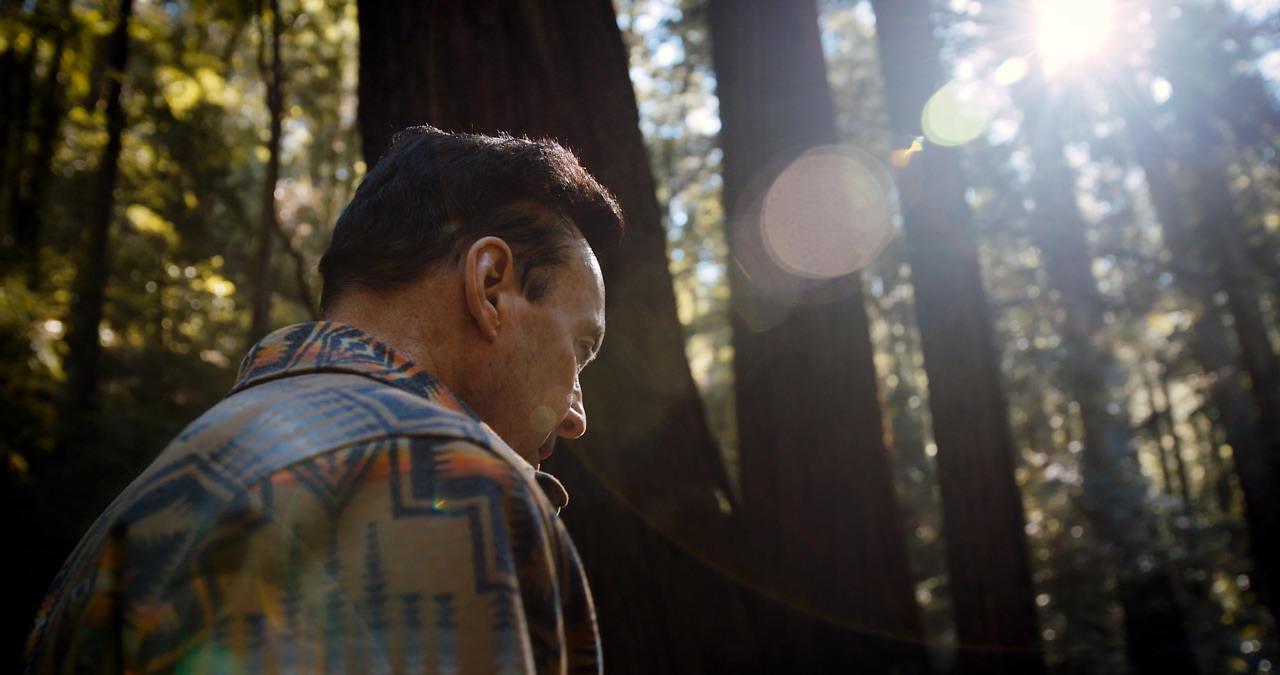
Greg Sarris is an accomplished author, university professor, and tribal leader serving his sixteenth term as Chairman of the Federated Indians of Graton Rancheria and his first term as board chair of the Smithsonian’s National Museum of the American Indian. His political activism in the 1990s culminated in the Graton Rancheria Restoration Act, which he co-authored, providing federal recognition and associated rights to the Coast Miwok and Pomo Native Americans of California, including the restoration of land to the Tribe, which had been without a homeland for over fifty years.
Sarris graduated summa cum laude with a degree in English from the University of California, Los Angeles and received his Ph.D. in Modern Thought and Literature from Stanford. He has taught English, American and American Indian Literature, and Creative Writing at UCLA, Stanford, Loyola Marymount University, and Sonoma State University. Currently, he serves as a member of the Board of Regents for the University of California and is an elected member of the American Academy of Arts and Sciences.
Sarris is also a producer, playwright, and the author of several books, including the award-winning How a Mountain Was Made (2017), Kirkus Book Prize finalist Becoming Story (2022), and Grand Avenue (1995), which was adapted to an HBO film, co-produced by Sarris with Robert Redford. He is co-executive producer of Joan Baez: I Am A Noise (2023) and his most recent play, Citizen (2023) debuted at San Francisco’s Word for Word theater and was lauded as a “lush […] linguistic feast” by the San Francisco Chronicle.
Debuts October 2023 — Nocturnalia
FOR IMMEDIATE RELEASE
Nocturnalia Explores the Enchanting World of Nighttime Wildlife in the American West
This fall, unleash your inner nighttime explorer with this fascinating guidebook to the creatures that thrive after dark.
BERKELEY, CALIF.— While darkness may typically be seen as cause for concern for us humans, naturalist Charles Hood and bat biologist José Gabriel Martínez-Fonseca are inviting readers to embrace the night and discover the nocturnal universe that stirs to life after we fall asleep. Featuring over 100 stunning photographs from California and the American Southwest, Nocturnalia: Nature in the Western Night takes readers on an environmental romp through the wonders of the Wild West.
On October 31, 2023, dive into the world of nighttime plants, owls, bats, and the celestial patterns that regulate our after-dark kingdom. From the bloom of the nightshade blossoms to the gleaming fox eyes, to the tiny sparrows guiding themselves with the stars, Hood and Martínez-Fonseca offer practical tips for budding nighttime naturalists. Citizen scientists of all stripes will expand their understanding of the life on earth we can’t always see.
“To state the obvious: nature does not stop when the sun sets,” write Hood and Martínez-Fonseca, “In this book, we want to celebrate the other half of life, the unknown half, the surprising half, and what at times might be the scary half.”
Nocturnalia is a must-read for anyone interested in exploring the wonders of the natural world. Hood and Martínez-Fonseca’s deep knowledge and passion for these nocturnal creatures are evident on every page, making this book an engaging and informative read for both nature enthusiasts and casual readers alike. Showcasing the flora and fauna that thrive under the cover of darkness—from the nocturnal flowers that unfurl under moonshine to the creatures that go bump in the night—Hood and Martínez-Fonseca take readers on a thrilling journey through the wonders of nature after nightfall.
Media Contact:
Kalie Caetano
Marketing & Publicity Director
For review copies, feature interest, and interview and image requests, get in touch: publicity@heydaybooks.com
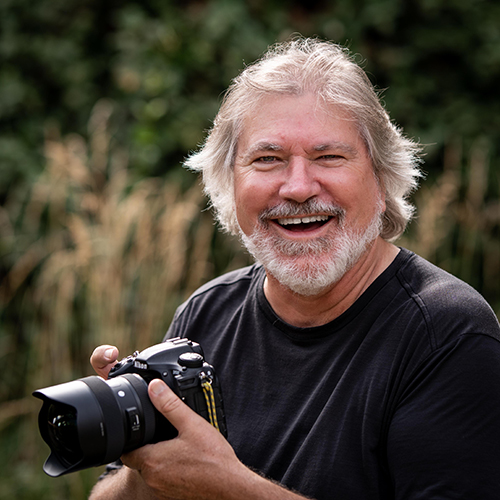
Charles Hood is a poet and naturalist who lives in the Mojave Desert. His previous books with Heyday include Wild Sonoma: Exploring Nature in Wine Country and A Salad Only the Devil Would Eat: The Joys of Ugly Nature. Always ready for the next excursion, he owns three bat detectors, nine headlamps and flashlights, and a hardcopy world atlas.
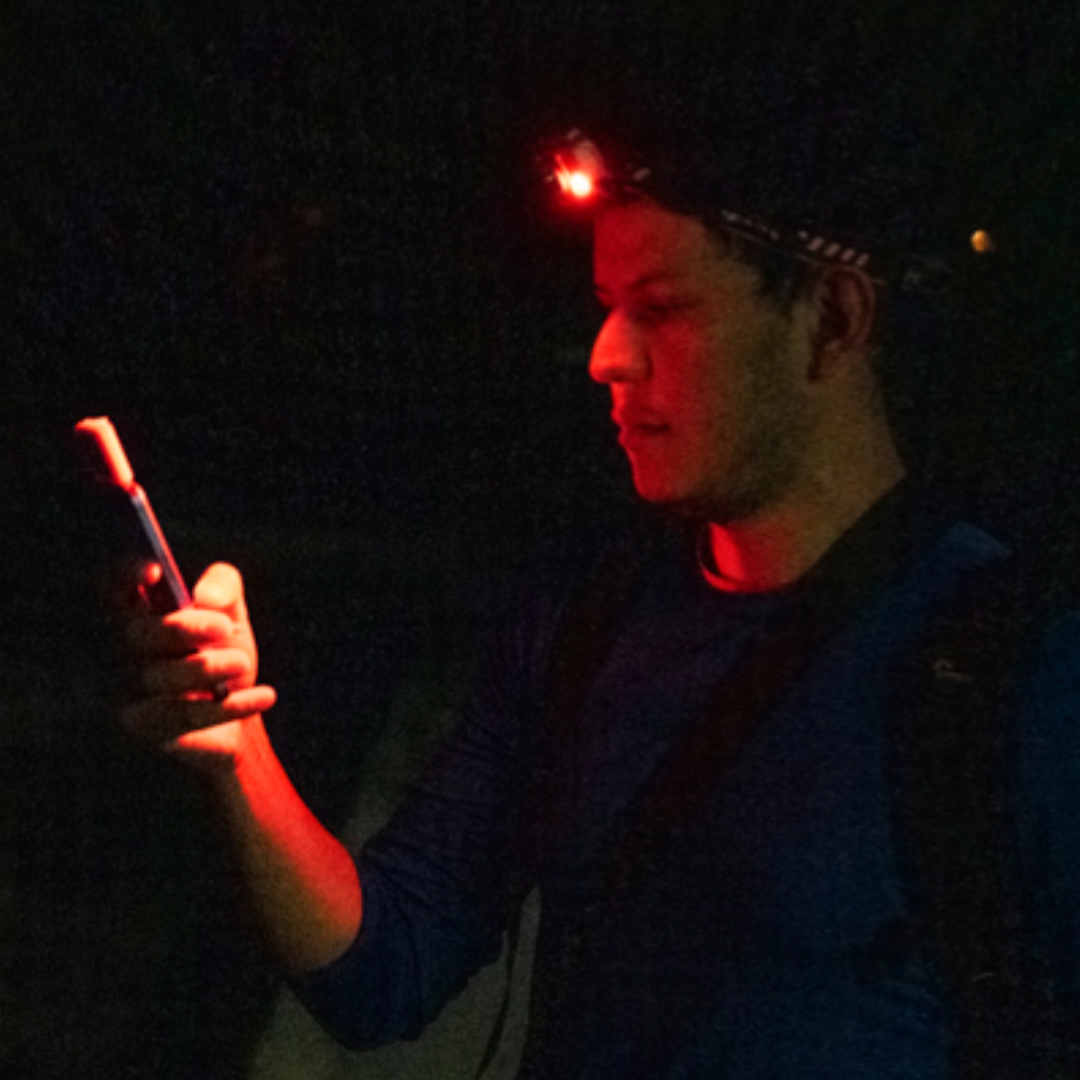
José Gabriel Martínez-Fonseca divides his time between Nicaragua and Arizona, where he recently completed a PhD in bat ecology. He owns almost as many headlamps and cameras as Charles does and has contributed images to wildlife publications worldwide. He is also very adroit at catching bats and tarantulas, among other creatures. Martínez-Fonseca is the coauthor, along with Charles Hood and Erin Westeen, of Sea Turtles to Sidewinders: A Guide to the Most Fascinating Reptiles and Amphibians of the West.
Debuts October 2023 — The Deserts of California
FOR IMMEDIATE RELEASE
Beloved Artist-Adventurer Obi Kaufmann Takes Readers on a Journey into the Heart of the Desert
The San Francisco Chronicle #1 bestselling author of the canonical California Field Atlas returns with an epic, forward-looking exploration of the state’s arid eastern regions.
BERKELEY, CALIF.—With climate breakdown heating up and desertification looming over the horizon, Obi Kaufmann leads curious adventurers on a voyage into the sage-and-ocher landscapes of the American West’s world-famous desert regions this fall in his revelatory and sumptuously illustrated new volume The Deserts of California: A California Field Atlas. As philosophical as it is geophysical, this journey blends science and art in Kaufmann’s signature style to throw into relief ecological insights greater than either might yield alone. Through expressionistic mapmaking, wildlife renderings, and geographic conservation guides, Kaufmann explores the marvels of and threats to these resilient yet sensitive ecosystems.
Featuring over 400 watercolors, this epic tome blazes a trail through the sun-scorched deserts of Sonora, Mojave, Colorado, and Great Basin and the many micro-ecosystems dwelling therein, from the arid to the alpine. With a naturalist’s devotion, Kaufmann articulates through paintbrush and pen stroke the beauty and temerity of desert life. The iconic flora of palm trees, sagebrush, and creosote and the hardy wildlife that scurry, slither, saunter, and soar across these stark and sublime tableaus take center stage in these pages. Written from an anticipatory perspective, Kaufmann meditates on the future of these rugged lands, vulnerable to a variety of injuries from urban incursion. From the gentrivacation of Joshua Tree National Park to the extraction of precious groundwater to the impacts of sound, light, garbage, and plastic pollution, Kaufmann explores what stories should be told about our rights, our responsibilities, and our relationship to the more-than-human world with wonder, sobriety, and hope.
“The Deserts of California presumes that hope, like healing, relies on time,” writes Kaufmann. “If there is time, there is hope. Although every desert habitat type is threatened, very little of it is yet extinct. Despite the complexity of the threat, everywhere there is precedent for resurgence.”
Of a piece with his best-selling books The Forests of California (2020) and The Coasts of California (2022), The Deserts of California (October 2023) rounds out Kaufmann’s expansive California Lands Trilogy. Individually and collectively, these volumes set out to transform entrenched colonialist attitudes toward the American West, and transform our concept of nature from a resource for extraction to a shared and cherished inheritance.
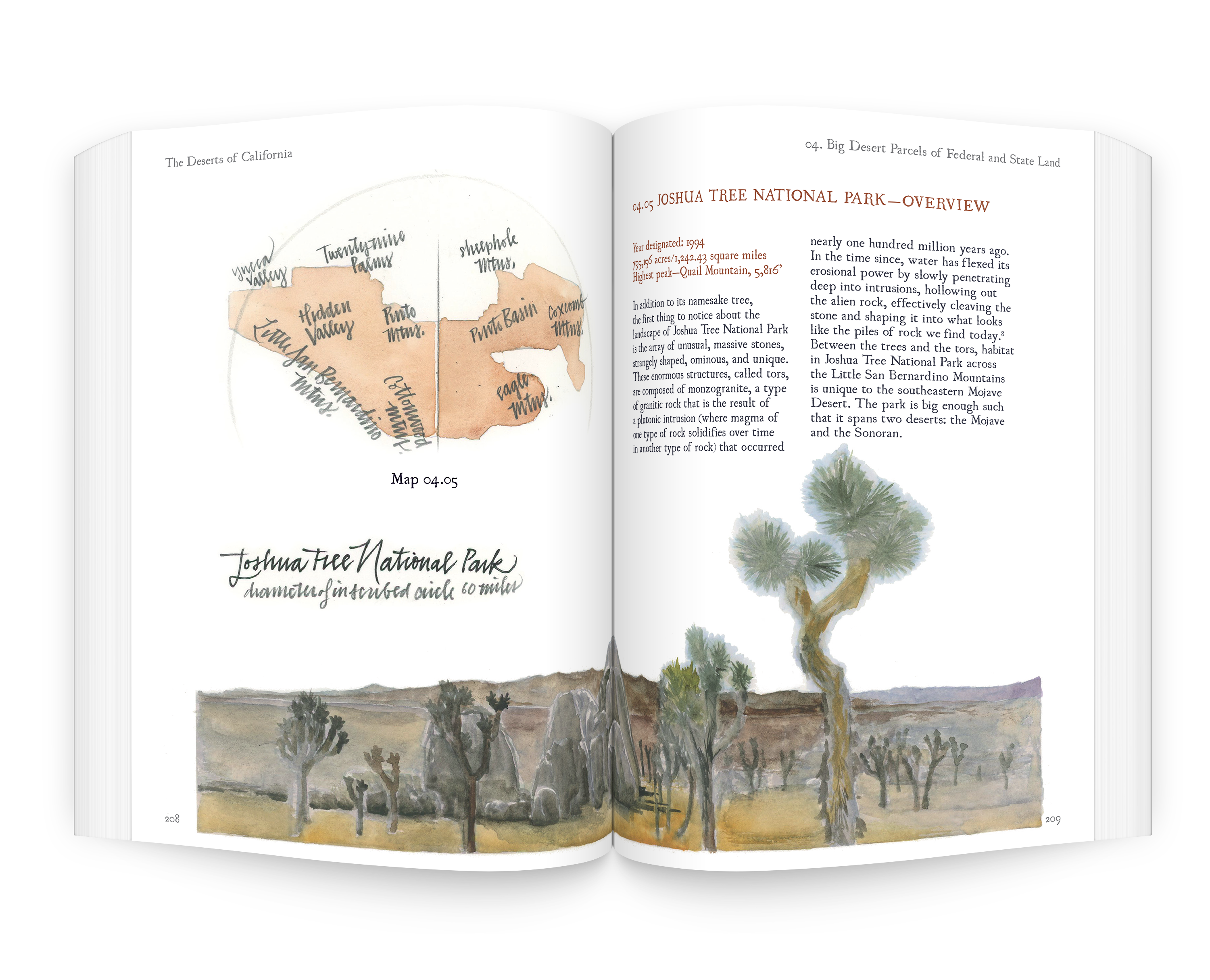
Media Contact:
Kalie Caetano
Marketing & Publicity Director
For review copies, feature interest, and interview and image requests, get in touch: publicity@heydaybooks.com
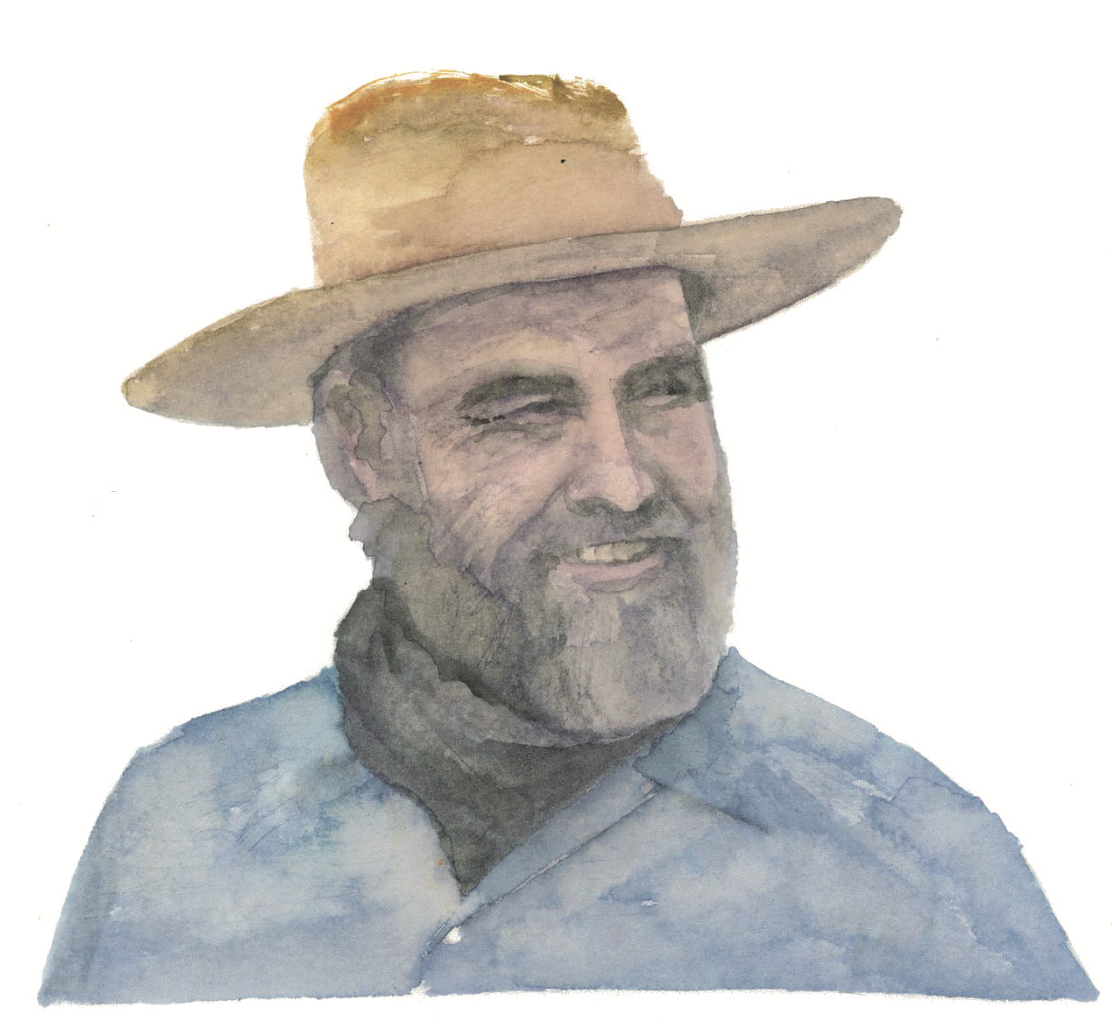
Obi Kaufmann is the author of The California Field Atlas (2017, #1 San Francisco Chronicle bestseller), The State of Water (2019), The Forests of California (2020), and The Coasts of California (2022), all published by Heyday. When he is not backpacking, you can find the painter-poet at home in the East Bay, posting trail paintings at his handle @coyotethunder on Instagram. His speaking tour dates are available at californiafieldatlas.com, and his essays are posted at coyoteandthunder.com.
A Note from Obi on the California Lands Trilogy and Other Works
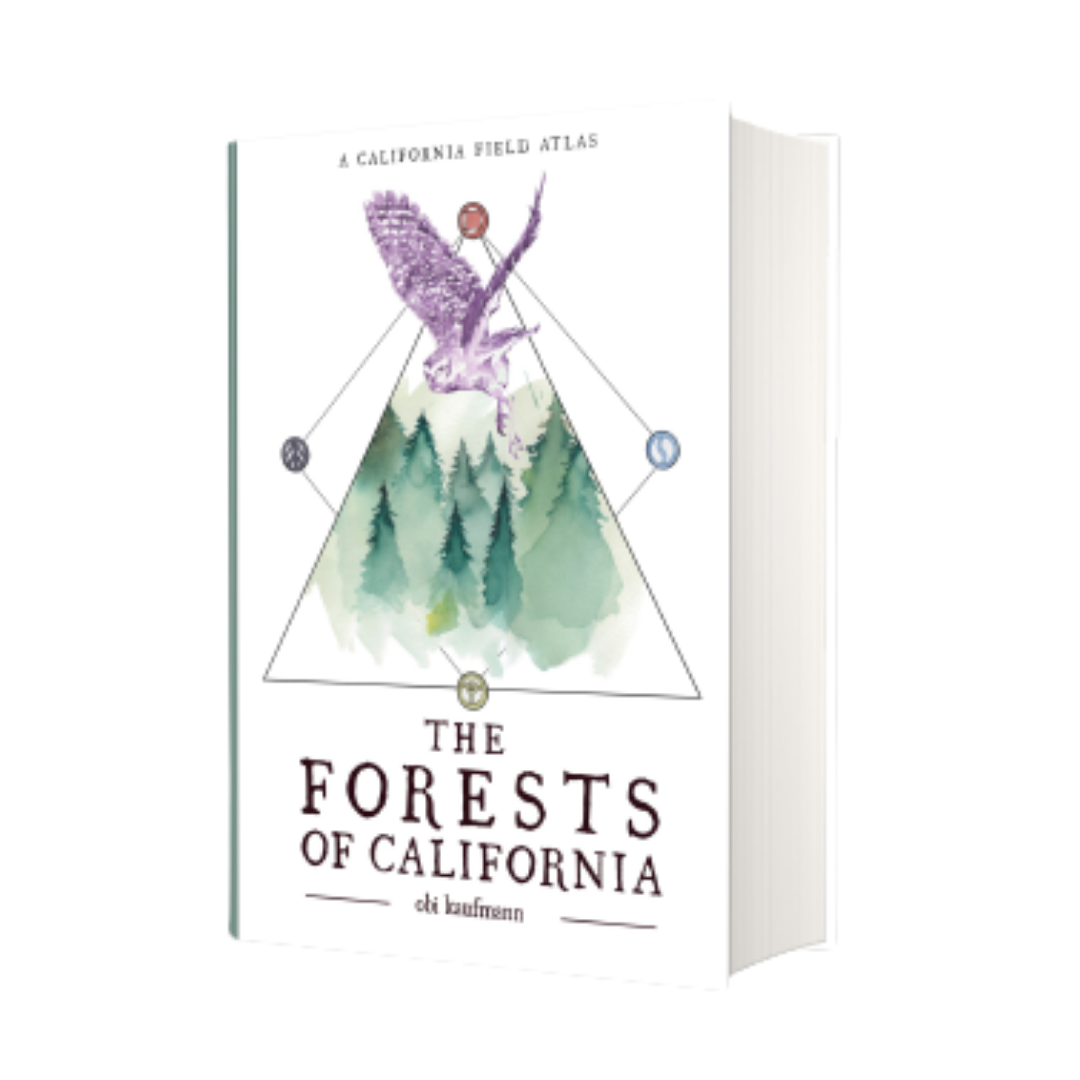
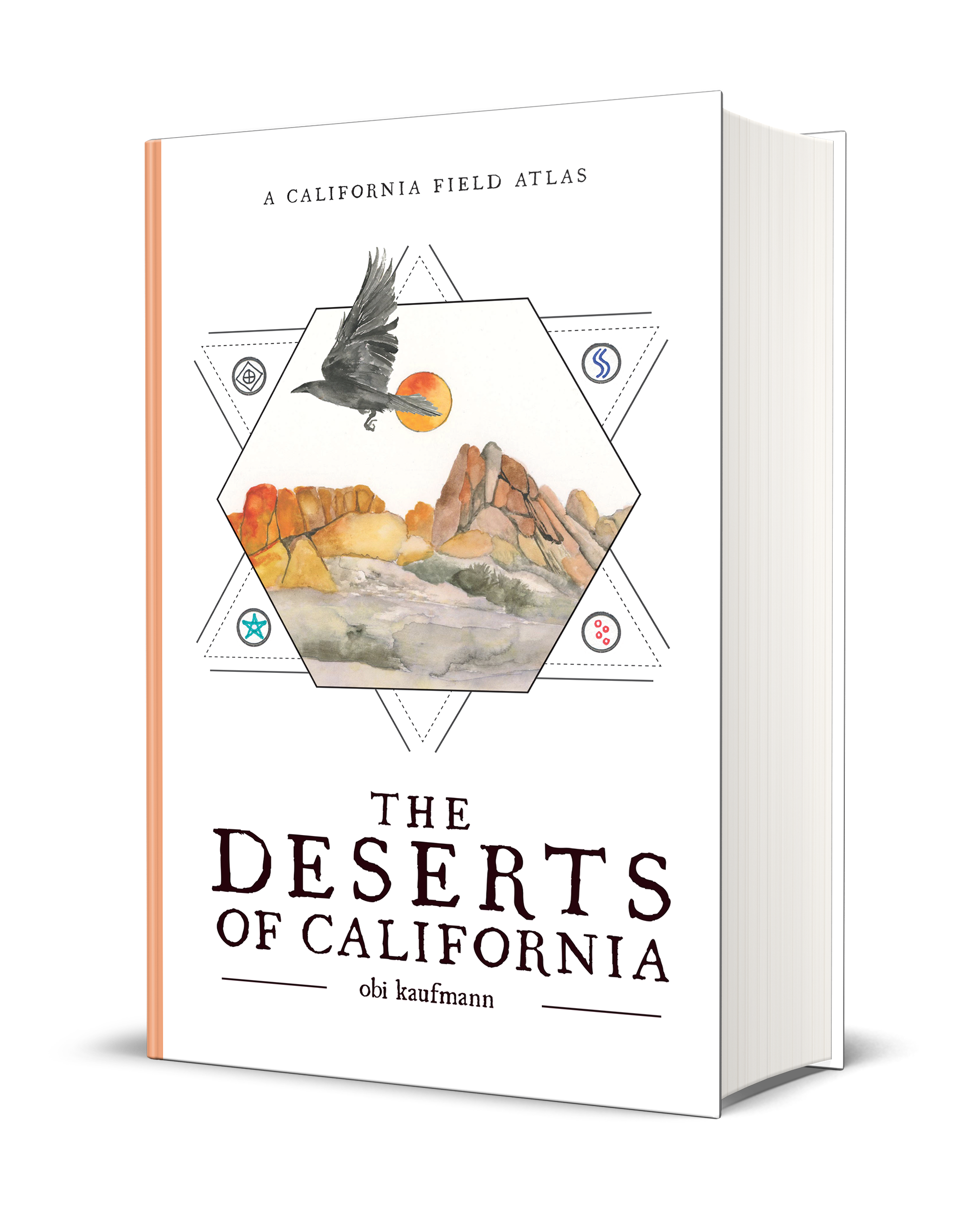
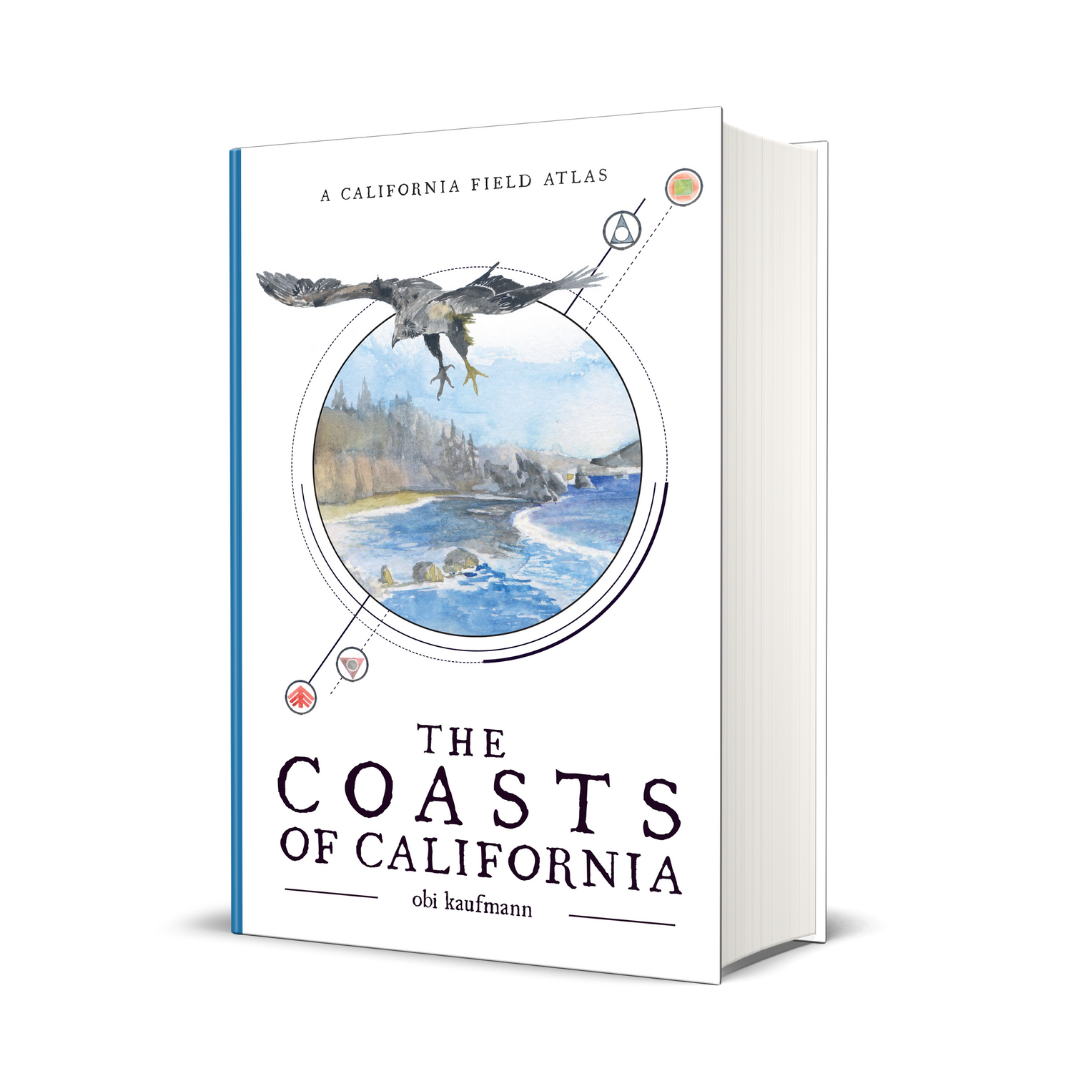
With the publication of The Deserts of California, my journey into the living heart of California, a journey that has given rise to what is rather informally called the California lands trilogy— exploring the forests, coasts, and now deserts of the West Coast—becomes a completed vision.
I set out on this journey with my first book, The California Field Atlas, in 2015. My intention was to explore the grand systems of earth, air, fire, and water, and to describe the context of these systems across the body of California’s world-famous landscape. To get to what is the California Field Atlas series I had to dig deep into the water infrastructure of the state and understand the storage, usage, and conveyance of California’s most precious resource. I did that in my second book, The State of Water (2019). I was shocked to find that my third book, The Forests of California (2020), was as much a descriptive journey into California’s evolutionary past as much as it was a catalog of the state’s arboreal ecology. Expanding on this idea of temporality, my fourth book, The Coasts of California (2022), was an ecological snapshot of the contemporary conditions that dynamically influence California right now, as the many bottlenecks of the twenty-first century seem to narrow and become more acute and threatening.
The Deserts of California (2023) is an exploration of the future, where the big questions of what saving nature actually means are brought into focus. California’s deserts are paradoxically as fragile as they are resilient, and they represent the greatest challenge humanity faces in the emerging Anthropocene. Although it may be that in the desert we are faced with the terrifying dilemma of having to sacrifice nature in order to save it, if we flip the script and approach the future from a different angle, where humanity and nature aren’t separate concepts, a hopeful vision emerges. Based on a reciprocal relationship with the more-than-human world, this vision begins with a nuanced understanding of biodiversity and ecology, where ancient wisdom and scientific innovation conjoin to not only paint a more beautiful future, but also tell a better story about the determining role our species has in making that future a reality.

Debuts September 2023 — California Against the Sea
FOR IMMEDIATE RELEASE
Pulitzer Finalist Sounds the Alarm and Offers A Way Forward for Confronting Sea Level Rise
In a new book, celebrated environmental journalist Rosanna Xia reveals what we stand to lose as the world’s oceans expand—unless we can begin to imagine more climate-wise futures.
BERKELEY, CALIF. — Wherever land meets sea, global warming is wreaking havoc. As the ocean absorbs heat generated by human industry, its waters swell into higher-than-high tides and city-leveling storms. Venice sinks, Louisiana shrinks, Indonesians flee their seaside capital, and North Carolina’s beaches are disappearing like a time lapse with no end. For the last hundred years, California’s 1,200-mile Pacific coastline has enjoyed relative calm due to a rare confluence of atmospheric factors. But shifting tides exacerbated by climate change are bringing this serene century to a screeching close. In California Against the Sea: Visions for Our Vanishing Coastline, Pulitzer finalist Rosanna Xia dives deep into the stakes, stopgaps, internecine struggles, and potential paths forward for the 27 million people who call this coastline home.
Voyaging across the state, Xia—a veteran coastal reporter for the Los Angeles Times—pulls the curtain back on the trepidations of scientists, the tenacity of activists, and the pitched battles intensifying in more than 20 communities dotting the California coast as they grapple with rising waters. These waters, which could surge by as much as 6–7 feet by century’s end, threaten to push the shore inland by a measure of multiple football fields. This anticipated surge imperils tens to hundreds of billions of dollars of human settlement—seawalls notwithstanding—to say nothing of the risk posed to human and non-human life. The scale of this prospective destruction and displacement could rival the impacts of the state’s raging wildfires.
The challenge, Xia says, is How do we get more people to care? How do we convey urgency? How do we tell them it’s now, not later? Through graceful, in-depth reporting Xia addresses herself to these questions, exploring how development and other vested interests have trumped science, how low-income communities bare the disproportionate brunt of environmental catastrophe (and are poised to do so again), how an attitude of human supremacy has hobbled our imaginations to envision what the coast could be, and how we may yet forestall impending devastation if we can find the way to embrace our collective capacity for change—in time.
Media Contact:
Kalie Caetano
Marketing & Publicity Director, Heyday
Megan Posco
Publicist, Posco Publicity
For review copies, feature interest, and interview and image requests, get in touch: publicity@heydaybooks.com and/or megan@poscopublicity.com
Advance Praise for California Against the Sea
“Just as the coast defines the liminal world between land and sea, so too does Rosanna Xia’s remarkable book exist in the overlap between development and erosion, between geological forces and human desire, between our ambitious past and our tenuous future. It’s viscerally urgent, thoroughly reported, and compellingly written—a must-read for our uncertain times.”
—ED YONG, author of An Immense World
“This book should be required reading for Californians—and all Americans. The fate of one state’s rising coastline, and what it portends for our future, will affect us all. Exquisite and wrenching, Rosanna Xia has written an essential book that shows us what we stand to lose.”
—LIZZIE JOHNSON, author of Paradise: One Town’s Struggle to Survive an American Wildfire
“Fans of Xia’s work for the L.A. Times will recognize her virtuosic blend of propulsive boots-on-the-ground storytelling, explanatory reporting, and genuine curiosity and love for place. A profound and timely exploration of humanity’s various and shifting relationships to coastlines and the forces that shape them by one of the great environmental reporters working today.”
—LISA WELLS, author of Believers: Making a Life at the End of the World
“Xia’s prophetic and perceptive book reveals a California coastline denied by centuries of settlers more intent on dreaming than facing the unsteady reality of the living ocean’s edge. California Against the Sea is the invitation we need today to enter a future where we learn to work with nature instead of against it. Xia’s message should be heeded everywhere ocean meets land.”
—MEERA SUBRAMANIAN author of A River Runs Again: India’s Natural World in Crisis, from the Barren Cliffs of Rajasthan to the Farmlands of Karnataka
“In the midst of the climate crisis, can the people of California treat the rising Pacific Ocean as something other than an adversary? In California Against the Sea, Rosanna Xia argues persuasively that such a transformation is not only possible but already underway, inspired by lessons from deep history and the recent past. Rigorously reported and beautifully written, this book is a crucial guide to the future.”
—MICHELLE NIJHUIS, author of Beloved Beasts: Fighting for Life in an Age of Extinction
“Xia’s California Against the Sea deftly charts the past, present and future of California’s changing coastlines in order to retrieve hope for more sustainable futures from headlines of environmental loss. This lucid account shows that sea-level rise is less an intractable problem than an urgent invitation to rethink our relationships with oceans and with one another. A beautiful, revelatory and prescient book.”
—LUCAS BESSIRE, author of Running Out: In Search of Water on the High Plains
“Rosanna Xia’s ability to move effortlessly between the journalist’s voice, the historian’s voice, and even the poet’s voice makes her story of our climate precarity more than an account of evidence and circumstance. The book is rife with humanity, nuanced and powerful because of it.”
—OBI KAUFMANN, author of The Coasts of California
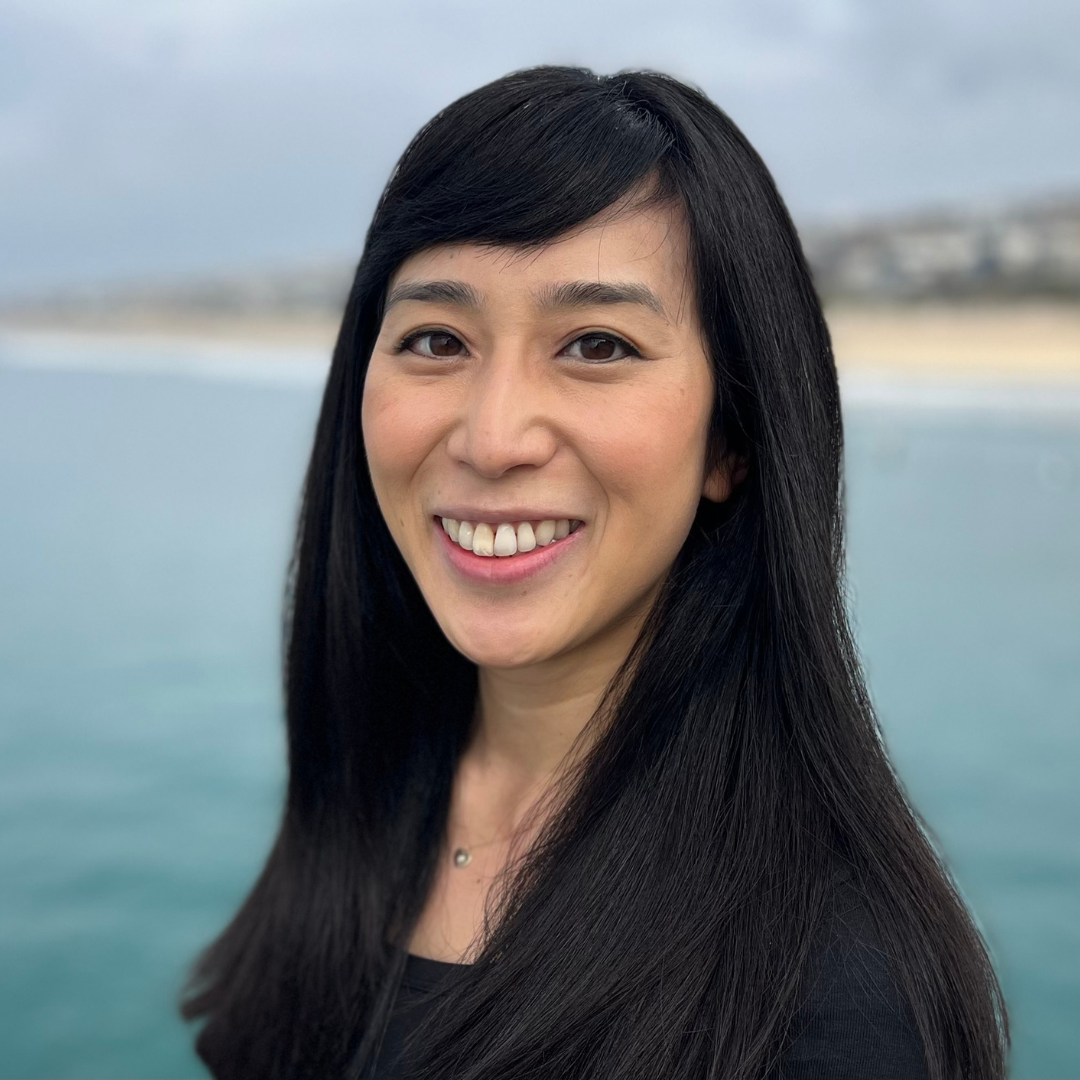
Rosanna Xia is an environmental reporter for the Los Angeles Times, where she specializes in stories about the coast and ocean. Her work spans feature writing to investigative reporting and engages themes of climate and social justice. Xia’s reporting has uncovered the dumping of toxic DDT waste off the Los Angeles coast; set the record straight on the seizure of Bruce’s Beach from its Black proprietors (prompting an unprecedented reparative land return in 2022); explored the impacts of coastal gentrification; and articulated the dangers posed to shorelines by pollution and heating oceans. She was a Pulitzer Prize finalist in 2020 for explanatory reporting on sea level rise, which inspired the work that culminated in California Against the Sea. Her writing has been anthologized in the Best American Science and Nature Writing series.
A Q&A with Rosanna Xia
As you travel the California coast, what does connecting with the ocean mean to you?
ROSANNA XIA: Connecting with the ocean has meant connecting more deeply with the land. The two are inseparable when it comes to understanding the past, present, and future of our coast. I’ve learned to see land as a tide that also rises and falls. I’ve come to appreciate our wave-battered cliffs that feed the sand on our beaches, and to cherish our half-submerged marshlands and all the vanishing, in-between spaces that once moved with the rhythms of the sea. The ocean is constantly shaping and sanding and nurturing our shoreline, and I find myself admiring these subtleties every time I’m out by the water.
You explore the possibility of having a more reciprocal relationship with nature as a direction toward more climate-wise action. What does this reciprocity entail?
ROSANNA XIA: I’ve been reflecting a lot on all the knowledge that we’ve collectively lost in the process of hardening our shoreline and building the California coast as we know it. We’ve walled off the sea, buried critical wetlands, and paved over ancient dune systems that once buffered our beaches. We’ve ignored Indigenous ways of listening to the water and sacrificed (and further disempowered) historically vulnerable communities for the sake of industrialization.
There exists more than one way to live with rising water, but our current notion of what the coast should be has overshadowed the possibilities of what could be. We keep building walls to protect what we know, but is this really the only way forward?
As a writer confronting climate change, how do you navigate the emotional impacts of seeing the impacts occur, and knowing they will get worse?
ROSANNA XIA: For years, I struggled with how to balance the “right” amount of hope and despair whenever I wrote about climate change. Too much hope might diminish the urgency. Too little can lead to defeatism and inaction.
But the longer I’ve reported on climate change, the more I’ve discovered it is not the feeling of hope, but responsibility, that grounds me. We have a responsibility to take better care of the air that we breathe, the land that we rely on, the ocean that has quietly absorbed the brunt of our emissions. This duty to clean up the messes of our past, and to reconsider how we want to live in the future, is now what guides my reporting and writing.
Debuts September 2023 — Chími Nu'am
FOR IMMEDIATE RELEASE
Let’s Eat! New Cookbook, Chími Nu’am, Guides Home Chefs on a Seasonal Journey Through Native California’s Foodways
Sara Calvosa Olson guides gourmands on a journey to decolonize their diets in this one-of-a-kind cookbook that serves up Native Californians’ traditional ingredients with a modern-day twist.
BERKELEY, CALIF.—California is home to a vast and vibrant array of Native American peoples each with their own distinctive culinary traditions rooted in their ancestral lands. This fall Karuk-Italian food writer Sara Calvosa Olson celebrates this Indigenous heritage in her inventive and vim-filled cookbook Chími Nu’am: Native California Foodways for the Contemporary Kitchen. Gathering over 70 delectable recipes and featuring more than 100 photographs as well as stories, staples, and stewardship philosophies from tribal communities across the West, this accessible kitchen companion reimagines some of California’s oldest ingredients for home cooks today.
Meaning “Let’s eat!” in the Karuk language, Chími Nu’am bucks the trend against the high-sugar, high-fat, high-sodium disease-making diets of mainstream food culture, centering recipes around natural foods indigenous to California, from acorns to deer meat, that have been cultivated and shared by Native peoples for thousands of years. Blending these traditions with waves of modern-day diasporic influences, Calvosa Olson brings us such mouthwatering plates as red chile rabbit tamales, manzanita waffles, stinging nettle risotto, wild berry freezer pops, miso smoked salmon chowder, and mussels and mushrooms on acorn bread — (“This recipe is as if someone said, ‘Avocado toast, but make it NDN.’ Well, I got you,” she writes).
Divided into four seasonal sections, recipes progress from fall through summer, tied to the cadence of the land’s natural rhythms and braided with insights on mindful ingredient sourcing and preservation. Calvosa Olson shows us how to stretch our bounty by making gathered ingredients last—through smoking, drying, pickling, kippering, canning, and repurposing those ugly veggies for stock, sauces, and braises. Acknowledging the inherently political nature of food, this cookbook also gently calls on us to divest from extractivist food systems by incorporating more local ingredients into our diets.
“Think of this as a reverse cookbook,” writes Calvosa Olson; “It isn’t the type of book in which you find a recipe and then run to the store for the ingredients you need to fulfill your weeknight dinner grind. This book requires a connection to nature and food gathering that you will need to nurture, to become inspired by your role as an environmental steward.” Geared toward Earth-to-table eaters and anyone keen to begin their journey to decolonize their mind in relation to food, this cookbook is a sharp and soulful addition to warm any kitchen.
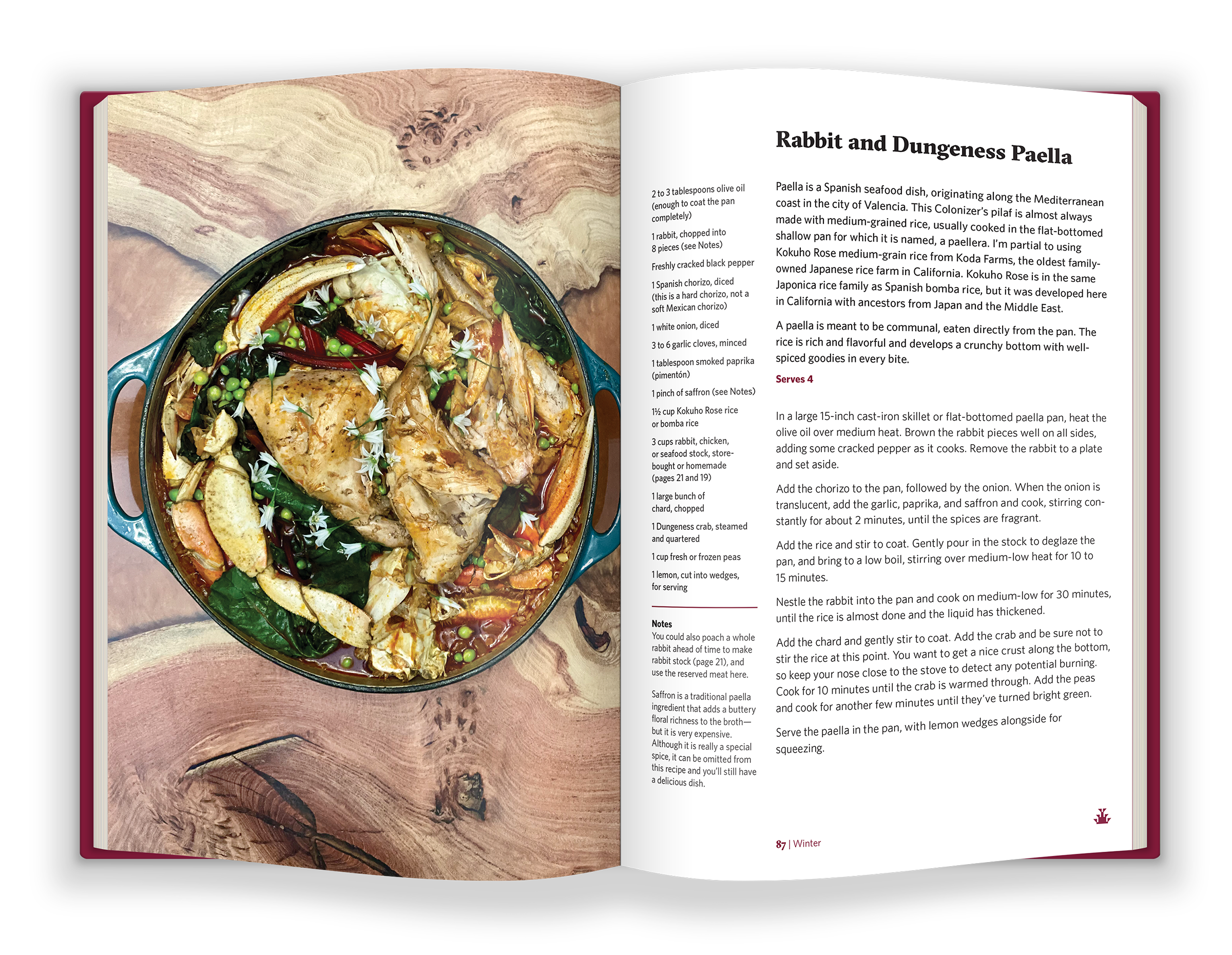
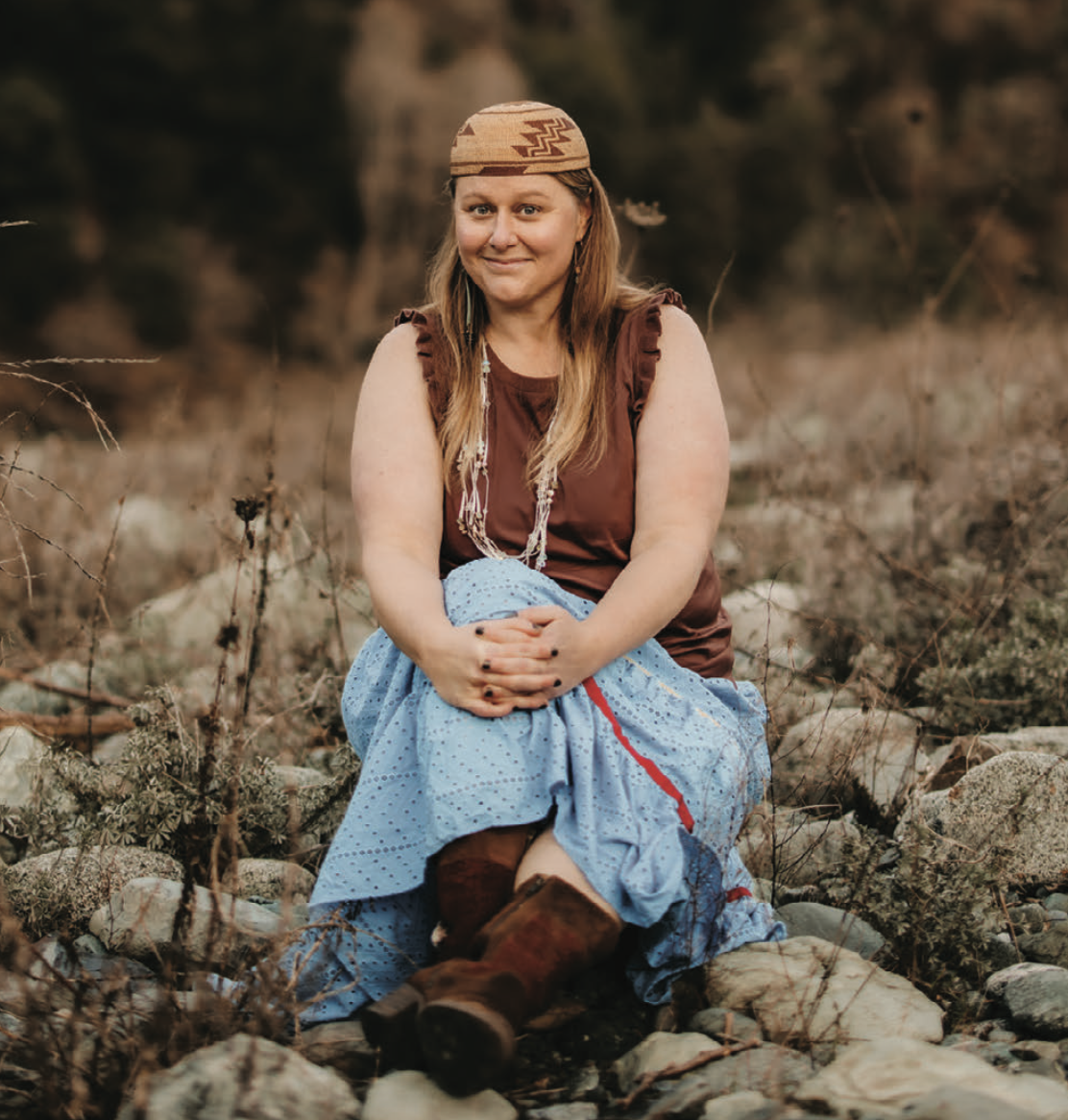
Sara Calvosa Olson (Karuk) is a food writer and editor living in the Bay Area with her husband and two teenage sons. Her work dwells at the intersection of storytelling, Indigenous food systems, security, sovereignty, reconnection, and recipe development. Her writing has appeared in News from Native California and Edible Shasta-Butte. Visit her website at akihsara.com, and follow her on Instagram at @thefrybreadriot.
Media Contact:
Kalie Caetano
Marketing & Publicity Director
For review copies, feature interest, and interview and image requests, get in touch: publicity@heydaybooks.com
Debuts August 2023 — The Scandal of Cal
FOR IMMEDIATE RELEASE
The Scandal of Cal is an Eye-Opening Call-to-Action for Restorative Justice at UC Berkeley
This unflinching critical history shines light on the university’s culpability in eugenics, Native American dispossession and erasure, and US imperialism abroad.
“Many have written of the horrors of genocide of the Indigenous peoples of Northern California, but none as affecting as Tony Platt. The Scandal of Cal is a template for scrutinizing other land-grant universities with their pasts of land grabs and white supremacy.”
—ROXANNE DUNBAR-ORTIZ, author of An Indigenous Peoples’ History of the United States
BERKELEY, CALIF. — Esteemed as an incubator of progressive thought, the flagship campus of the University of California in Berkeley, also known as Cal, styles itself as an agent for social justice—but within its walls and buried beneath its campus lies evidence of the university’s unreconciled histories with scientific racism, the military-industrial complex, and Native American genocide. In The Scandal of Cal: Land Grabs, White Supremacy, and Miseducation at UC Berkeley, long-time academic and research scholar Tony Platt unearths the university’s settler-colonial origins and traces their reverberating impacts to today.
In this meticulously researched book—the first critical history of UC Berkeley—Platt excavates the origins of the university and its founding worldviews. Setting the institution’s history within the context of what he describes as “The California Story”—a mythologized, whitewashed public narrative of the state’s past—The Scandal of Cal reveals how the maelstrom of eugenics, Manifest Destiny, and American imperialism defined UC Berkeley’s original ideological mission and normalized the university’s devastating toll on humanity, from the Indian Wars to Hiroshima and beyond.
Platt’s work calls attention to the ongoing harms of these living histories, dealing a forceful blow to narratives perpetuated by the university’s Brand Protection arm. Today, UC Berkeley sits on the largest collection of unrepatriated Native American human remains in the United States—possibly the world—despite its obligations under federal mandate to return ancestors to their tribal descendants. Institutional memory, meanwhile, valorizes white supremacist forerunners in campus architecture and rosy origin stories, obscuring the personal culpability in historic wrongs of such figures as museum benefactor Phoebe A. Hearst, nuclear scientist Robert J. Oppenheimer, anthropologist Alfred Kroeber, and others.
“Academia functions not just as a servant of power but as a powerful institution in its own right,” argues Platt, whose work serves as a truth-telling model for other universities. Cautioning readers that “silence is habit-forming,” Platt ends his book with a hard question: What would it take for Berkeley to live up to its reputation as an agent of social change, to repair harms, and to restore public trust?
Advance Praise for The Scandal of Cal
“An important addition to ongoing calls for social, political, and epistemic justice for Native peoples in California and beyond, The Scandal of Cal reminds us that a historical narrative which honors Native American resistance and sovereignty helps us to envision decolonized futures.”
—CUTCHA RISLING BALDY, author of We Are Dancing for You: Native Feminisms and the Revitalization of Women’s Coming-of-Age Ceremonies
“Writing with prosecutorial fervor, Tony Platt marshals extensive research and six decades of personal experience to charge the University of California, Berkeley, with moral errors of deep significance—sins of both commission and omission.”
—BENJAMIN MADLEY, author of An American Genocide: The United States and The California Indian Catastrophe, 1846–1873
“Platt peels back the façade of an institution that professes a commitment to social justice and shrouds itself in a legacy of student activism. His central argument is broadly applicable across academia.”
—DAMON B. AKINS, co-author of We Are the Land: A History of Native California
“A rich and rightly disturbing addition to the emerging literature of the sordid side of the history of the West. Platt’s scholarly and moving volume may well nudge the overlords of Berkeley to begin the slouch toward their atonement.”
—JOHN BRISCOE, Distinguished Fellow, Berkeley Law, recipient of the Oscar Lewis Award for Western History
“This is a land acknowledgement.”
—RUTH WILSON GILMORE, author of Abolition Geography: Essays towards Liberation
Media Contact:
Kalie Caetano
Marketing & Publicity Director
For review copies, feature interest, and interview and image requests, get in touch: publicity@heydaybooks.com
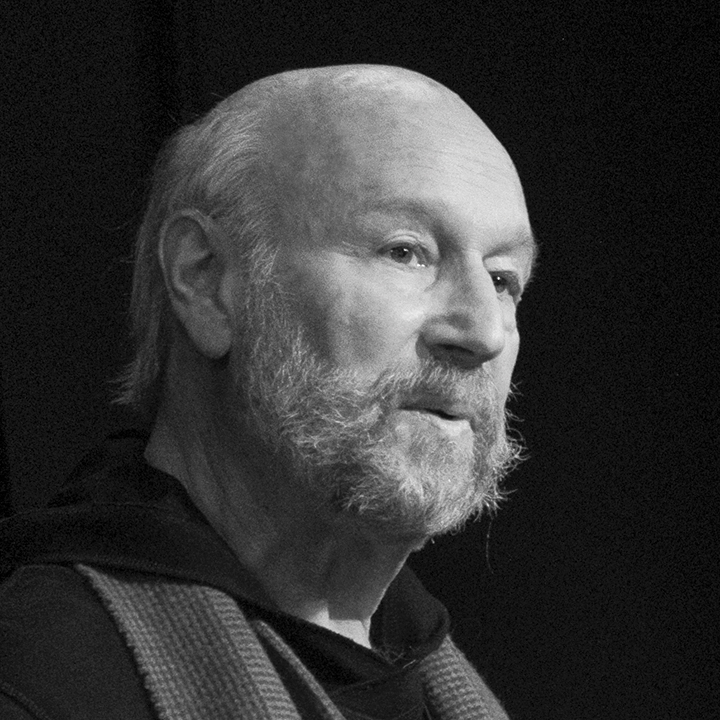
Tony Platt is a Distinguished Affiliated Scholar at UC Berkeley’s Center for the Study of Law and Society and co-founder of the Berkeley Truth and Justice Project. He is the author of thirteen books, including Grave Matters: The Controversy Over Excavating California’s Buried Indigenous Past (Heyday, 2011) and Beyond These Walls: Rethinking Crime and Punishment in the United States (St. Martin’s Press, 2019). His work has been translated into German, Spanish, Italian, and Japanese. Platt has also written for the Los Angeles Times, San Francisco Chronicle, Berkeleyside, Truthdig, The Nation, Salon, and The Guardian and his commentaries have aired on NPR. He was interviewed by ProPublica and NBC reporters during their 2023 investigation of UC Berkeley’s noncompliance with the federal Native American Graves Protection and Repatriation Act (NAGPRA). He lives in Berkeley and Big Lagoon, California.
A Q&A with Tony Platt
Your book focuses on Cal’s early years—in particular the ways the university built its reputation on conquest, racist thought, and violence. What makes this history important to confront today? What is the cost of saying, “That’s all in the past,” and ignoring it?
We know from the history of atrocities around the world that the past never rests in peace, and that the decision to remember is always in motion and subject to revision. States and institutions do their best to invent an origins story that is heroic and inspirational. The University of California exemplifies this tendency: replacing a history of land grabs, white supremacy, and hoarding of Indigenous human remains and artifacts with a self-serving narrative about the inevitability of Progress and Civilization. Meanwhile, the university continues to benefit from land acquired in the wake of genocide; to celebrate founding fathers and mothers who made their fortunes and fame from war and conquest; and to enshrine academics who polished their careers by making white supremacy respectable. The past is very much present. No doubt it will be disturbing for Cal to excavate what it imagines to be its settled origins story. But I think it is more disturbing to leave actual history comfortably shrouded in amnesia.
You pay special attention to Cal’s history of hoarding Indigenous remains. The university still has the remains of over 9,000 Native people, likely more than any other American academic institution. What do you hope your book will change about this situation?
The university has failed for thirty-two years to comply with federal legislation that required it to publish an accurate inventory of its plundered Indigenous collections in order to facilitate repatriation to tribes. Why such stubborn resistance despite decades of Native organizing, from polite requests to rambunctious militancy, and recent efforts by the California legislature to make Cal live up to its legal and ethical responsibilities? The Scandal of Cal argues that the university’s hoarding problem has deep institutional and structural roots that necessitate systemic solutions.
What do you hope Cal alumni and students will do after reading this book?
Hopefully, this book will empower activists to make Berkeley live up to its public relations brand as a public service university and catalyst of social justice. California’s tribes and Native organizations must play a central part in this reckoning. After all, their homelands, blood, ancestors, patrimony, and knowledge are central to the history of the region, state, and university.
Linda Ronstadt Fills the House at the Tucson Book Festival
Linda Ronstadt Fills the House at the Tucson Book Festival
A note from Heyday Publisher Steve Wasserman
Linda Ronstadt was the headliner at the just-concluded annual Tucson Book Festival. As her publisher, I was thrilled to be there to feel the palpable affection and esteem sent her way by the twelve hundred people who packed the Arizona Ballroom at the University of Arizona’s Student Union on Sunday afternoon to hear her talk. Tucson is Linda’s hometown and her book, Feels Like Home: A Song for the Sonoran Borderlands is a paean to the place where she was born and raised and which, as she recounts, shaped her entire sensibility, musical and otherwise. But something occurred at that event that was genuinely surprising beyond the love for Linda and her musical legacy. A member of the audience made striking and newsworthy and wholly unexpected remarks.
During the open mic given to members of the crowd to ask questions, a lanky man wearing a large cowboy hat stood up from the back of the hall and introduced himself as the Sheriff of Santa Cruz County. He said his name was David Hawthorne and he proceeded to make a remarkable confession, a confession that took some political guts.
He said he’d come to Ronstadt’s talk because he’d been moved by her activism, by what she’d been saying for years, insisting that the demonization of migrants was a matter of national shame, writing in her new book, Feels Like Home, that she was “heartbroken to see how the country has sunk into anti-immigrant racism and horrifying violence. . . . The tragedy is that many present-day descendants of immigrants look back at their own ancestors as the righteous and holy ones, and regard the newest arrivals with suspicion and disgust,” concluding that “It would be more honest if we called our country the United States of Who the Fuck Are You?”
Hawthorne said he’d been greatly affected by her example, that his was a fifth-generation Arizona family that had done business with her grandfather, and that he personally was seeking to act toward others with empathy, trying to put into place policies throughout the county that would treat migrants with the dignity and decency they deserved. The audience erupted in applause. He strode toward the dais and presented Linda with a sheriff’s coin as a token of his respect and appreciation.
Later, Linda told me she was happy to have this badge of honor as you never know when you might be pulled over for speeding or some other infraction and it just might be useful as you were showing your driver’s license to have such a badge poking out of your purse.
Debuts June 2023 — Birds of Point Reyes
FOR IMMEDIATE RELEASE
Birds of Point Reyes Pays Artful Homage to World-Famous Avian Biodiversity Hotspot
Illustrator Keith Hansen showcases the birds who live and layover in Marin’s premiere birding destination with paintings and playful prose in new book.
“Magnificently illustrated and narrated in Hansen’s poetic and often playful voice, this jewel of a book enables us to experience nature as miraculous. Each essay deserves to be reread often as a meditation on beauty and survival.”
—Amy Tan, author of The Joy Luck Club
BERKELEY, CALIF. — The sky that stretches over the rugged coastline of the Point Reyes Peninsula is one of the most frequented flyways in the nation, a veritable Grand Central Station for the feathered. Each year this region draws thousands of experienced birders, budding naturalists and outdoor enthusiasts to glimpse the stunning diversity of species flying overhead—from the arctic shorebirds wintering southward to the bold patterned songbirds honeymooning northward. In addition to these faraway sojourners, an abundance of year-rounders nest among the cypresses and sea cliffs making the Point Reyes National Seashore one of the top ten bird diversity hotspots nationwide.
This summer Bolinas-based artist Keith Hansen, author of the best-selling Hansen’s Field Guide to the Birds of the Sierra Nevada, invites readers to look up and take flight with these winged wonders in his richly illustrated guide Birds of Point Reyes. Through his paintbrush, Hansen brings 27 iconic species to life with dexterity and aplomb—including the beachcombing Snowy Plover, the rugged Surf Scoter, the elusive Rock Wren, the fearless American Kestrel, and more. Each richly realized portrait features an accompanying profile detailing build, plumage, character, and other idiosyncrasies gathered through Hansen’s years of observation and fieldwork with the Point Reyes Bird Observatory.
An introductory section to this volume also offers Hansen’s guidance and insight to the migratory seasons and insider tips for fruitful and ethical bird-gazing that will, as Hansen writes, help readers “perfect the art of standing still and be rewarded with the intimate and memorable encounters with the creatures of nature.”
Birds of Point Reyes is the third volume in Heyday’s beloved bird series, which also includes Oliver James’s Birds of Berkeley (now available in paperback) and Alex Harris’s Birds of Lake Merritt. It debuts June 2023, during peak migratory season.
Media Contact:
Kalie Caetano
Marketing & Publicity Director
For review copies, feature interest, and interview and image requests, get in touch: publicity@heydaybooks.com
Advance Praise for Birds of Point Reyes
“Keith gets the Point! He distills decades of appreciation of Point Reyes into a compact treasury of natural history knowledge. Marrying his art with a lifetime of acute observation, Keith offers more than a guide to identification—you really understand how each of these birds lives. And it’s all done in his sparkling and entertaining style.”
—Burr Heneman, former executive director of Point Reyes Bird Observatory
“Keith Hansen’s lovely book perfectly pairs informative, entertaining, and insightful species accounts with beautiful illustrations. A necessity for anyone visiting the Point Reyes region!”
—Sophie Webb, artist, author, and biologist
“The breathtaking illustrations and exuberant species accounts in this book arise from Keith’s lifetime of boundless enchantment and keen observation. His eye for nuance and beauty brings each species to life on the page. Most important of all, his celebration of this unique peninsula’s wondrous birdlife teaches us to stay open to the world with our eyes, ears, and mind.”
—Jules Evens, author of Natural History of the Point Reyes Peninsula

Keith Hansen illustrated and co-authored Hansen’s Field Guide to the Birds of the Sierra Nevada (Heyday, 2021), a field guide companion to Birds of the Sierra Nevada: Their Natural History, Status, and Distribution. He is a professional bird illustrator whose images have been featured in Discovering Sierra Birds; Birds of Yosemite and the East Slope; and Natural History of the Point Reyes Peninsula, among other books. His Wildlife Gallery, part of the Bolinas Museum, is an open studio showcasing his originals, prints, and other artwork. Hansen lives in Bolinas, California.
Debuts March 2023 — Boom Times for the End of the World
FOR IMMEDIATE RELEASE
A Propulsive Collection from Late Culture Reporter Scott Timberg Debuts from Heyday
Boom Times for the End of the World gathers Timberg’s lively love letters and deftly wrought dirges to the creative class he chronicled.
“A perfect journalistic valediction from one of LA’s finest commentators.”
—RICHARD THOMPSON, singer-songwriter, author of Beeswing
BERKELEY, CALIF. — Boom Times for the End of the World is a perceptive and prescient collection of cultural criticism from Scott Timberg, the late chronicler of the creative class and devotee of the prodigious dream machine of Los Angeles. In this work, the passionate arts journalist, author of the acclaimed Culture Crash (2015), plunges readers into the annals of Hollywood, the bullpens of alt-presses, and the backstages of the LA Philharmonic in a celebration of art’s meaning-making power and an assessment of its beleaguered relationship to the commercial market.
Featuring over two dozen essays published in the New York Times, Al Jazeera America, Vox, and others, this volume encompasses some of Timberg’s most incisive criticism and forward-thinking concerns about the creative economy—for instance, how popular music has digested decades of inequality; the collapsing hierarchy of high- and lowbrow art; and whether unions can save the creative class.
Formerly a staff writer for New Times LA, the Los Angeles Times, and Salon, Timberg was also no stranger to the turbulent freelance economy. Renowned by artists and peers for his omnivorous mind and unquenchable curiosity, he was described as a “polymath arts journalist” by the likes of Lynell George, Janet Fitch, and Charles McNulty and a “patron saint for all the forgotten writers, artists, musicians, and other victims of the gig economy,” by Ted Gioia (author of the Introduction to this volume). Grief rippled across the cultural ecosystem on the occasion of Timberg’s suicide on December 10, 2019, a shock still deeply felt by many admirers.
“Scott knew many things,” says musician and Galaxie 500 frontman Dean Wareham. “To paraphrase Isaiah Berlin, he was a fox, not a hedgehog, and this collection is the proof.”
“In an era of edgy hot takes and glib quick-hits, there is something soul satisfying in hearing Scott’s erudite voice again. A ravenous researcher, deep thinker and elegant wordsmith, Scott put his full heart into everything. […] It’s such a gift to finally have some of his finest observations and meditations collected between two covers.”
—LYNELL GEORGE, author of A Handful of Earth, A Handful of Sky
“This insightful compendium brings together highlights from the career of Los Angeles Times reporter Timberg (Culture Crash), who died in 2019. […] The selections attest to the richness of Timberg’s analysis and demonstrate that the author was as comfortable dissecting the legacy of pianist Glenn Gould and the stories of Ray Bradbury as he was Spike Jonze films and lyrics by rap group the Coup. […] This is a fitting testament to a skilled cultural critic.”
“As much a love letter to California as it is to the artists that Timberg championed, this posthumous collection gathers pieces that are deep and meditative, creating a narrative about the trajectory of culture, at times exciting, often disappointing, and always interesting.”
Media Contact:
Kalie Caetano
Marketing & Publicity Director
For review copies, feature interest, and interview and image requests, get in touch: publicity@heydaybooks.com

Scott Timberg, a former arts reporter for the LA Weekly and the Los Angeles Times, wrote on music and culture and was a contributor to Salon, the New York Times, and Vox. He was an award-winning journalist, a blogger on West Coast culture, and an adjunct writing professor. His previous book, Culture Crash: The Killing of the Creative Class, was published in 2015 by Yale University Press. Richard Brody of the New Yorker called Culture Crash “a quietly radical rethinking of the very nature of art in modern life,” and Ben Downing, writing in the Wall Street Journal, said, “Mr. Timberg succeeds in assembling a large, coherent, and troubling mosaic . . . weaving all manner of information and opinion into a fluent narrative of cultural decline.” Timberg died by his own hand on December 10, 2019, in Pasadena, California. He was fifty years old.
An excerpt from the Introduction by Ted Gioia
For many of us, Scott’s death revealed uncanny and disturbing connections with his professional life over the last decade, when he emerged as our leading chronicler and champion of creative professionals who had been squeezed and displaced in the “culture business.” This large and growing demographic included, as he saw it, everyone from journalists like himself all the way to the film lover who once worked at the local video rental store (before it closed) or the minimum-wage clerk at the defunct indie bookstore.
They had all been part of a healthy cultural ecosystem, and he had watched it collapse over the course of just a few years.
And then it happened to him too.
But at first there were successes. After working for The Day in Connecticut and the alt-weekly New Times in SoCal, Scott got hired by the Los Angeles Times. This was the ideal job for him, and again and again he delivered remarkable articles on tight deadline, never losing his enthusiasm for the next concert, the latest art exhibition, the forthcoming book, the hot new film, and anything else that came his way.
Scott had a knack for finding the best in the cultural scene on the dream coast. We would have long, rambling conversations about California—which for him was a rich tapestry in which the threads, on any given day, might include West Coast jazz, Ross Macdonald’s Lew Archer mysteries, Spike Jonze’s movies, Ed Ruscha’s pop art, Robinson Jeffers’s Hawk Tower, sci-fi from Ray Bradbury or Philip K. Dick, La La Land, L.A. Confidential, the California history books of Kevin Starr, the photos of William Claxton, or Gustavo Dudamel’s latest performance. Some of those turned up as subjects in his published writings, but the surviving articles and essays only begin to sketch out his endless curiosity and passion for his adopted home state.
He saw the challenges he faced echoed in the lives of so many others, and he cared deeply about all those who suffered in the same way he did. The notion that his abbreviated life might serve as a rallying point for the compassion owed to those squeezed by our culture shift would have given Scott a small bit of gratification. I know it provides me with some consolation.
But Scott would also want people to remember the joy and exhilaration he felt in pursuing his chosen vocation. His selected writings do just that. Here he still survives in the role he played best: the passionate and earnest culture writer who loved his misread city. I only wish it had loved him half as much in return.
